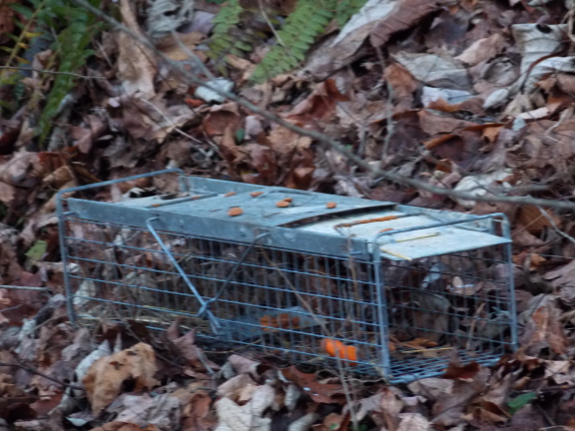
archives for 12/2013
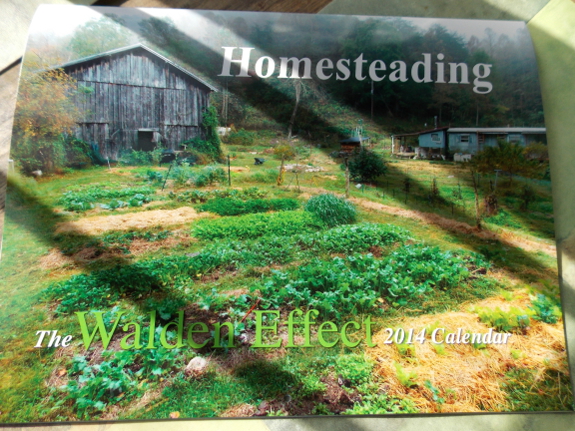
If you waited to get your homesteading calendar, you're in luck --- they're 50% off this week! Jayne called this a Cyber Monday sale, but I talked her into giving you seven days to make your decision. After all, I know that a lot of homesteaders don't hit the computer every day, and I don't want our loyal readers to miss the opportunity. But be sure to place your order by Saturday night, at which point the calendars will go back up to full price.
I could glow about the awesome job Jayne did on this calendar, but instead, I'll share the words of other readers:
"It is gorgeous! I encourage this for a gift to yourself or a gift to someone who loves good photography of happy homesteading." --- Julie
Enjoy!
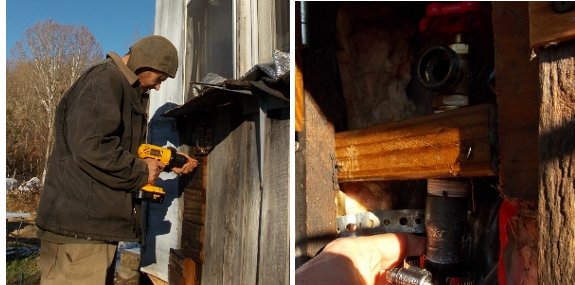
We had a busted water pipe
yesterday that turned out to be easy to fix.
A long term solution might be
one of those electric
pipe heaters.
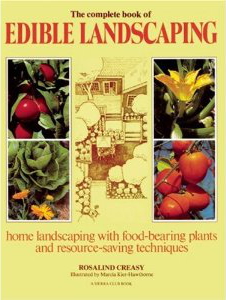 Rosalind Creasy's The Complete Book of Edible Landscaping
was probably a cutting-edge book when it first came out in 1982, but
now I feel like the same information is presented in a better fashion in
various forest gardening books and in Robert Kourik's Designing and Maintaining Your Edible Landscape Naturally.
The most helpful two-thirds of Creasy's text consists of an
encyclopedia of plants recommended for edible landscaping and, again, I
feel like you'd get more information on that topic from Lee Reich's Uncommon Fruits Worthy of Attention and from Eric Toensmeier's Perennial Vegetables.
Rosalind Creasy's The Complete Book of Edible Landscaping
was probably a cutting-edge book when it first came out in 1982, but
now I feel like the same information is presented in a better fashion in
various forest gardening books and in Robert Kourik's Designing and Maintaining Your Edible Landscape Naturally.
The most helpful two-thirds of Creasy's text consists of an
encyclopedia of plants recommended for edible landscaping and, again, I
feel like you'd get more information on that topic from Lee Reich's Uncommon Fruits Worthy of Attention and from Eric Toensmeier's Perennial Vegetables.
However, Creasy's book is
still worth reading, particularly if you're an urban gardener who has
to make your tomatoes and cabbages blend in with the neighbor's perfect
lawn and clipped hedges. Creasy lists varieties of each species
that are not only productive, but that also are particularly pretty in
the landscape (although some of these varieties have fallen out of
favor and may now be hard to find).
And I should add the caveat that there is an updated version of Rosalind Creasy's book available, although there's no search-inside-the-book feature on Amazon, so I can't tell how much the 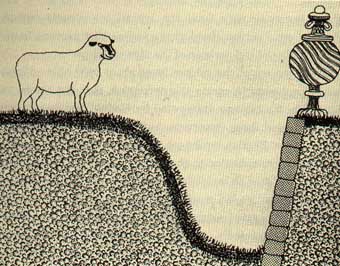 book
was revised and now much of the information stayed the same. I
also still mined quite a few thought-provoking tidbits from The Complete Book of Edible Landscaping,
despite having read many of the more-modern books on this theme.
For example, I'd heard of ha-has, but didn't realize that they were
originally imagined as a hidden barrier to keep deer, cattle, and sheep
in sight but out of the garden. And I'd never considered making
low-tech permeable paving similar to the way we built our ford,
by sinking cinderblocks in the ground and filling them with
gravel. Finally, Creasy's book got me thinking more scientifically
about summer shade and winter heat retention around our south-facing
bank of windows...but that's fodder for another post.
book
was revised and now much of the information stayed the same. I
also still mined quite a few thought-provoking tidbits from The Complete Book of Edible Landscaping,
despite having read many of the more-modern books on this theme.
For example, I'd heard of ha-has, but didn't realize that they were
originally imagined as a hidden barrier to keep deer, cattle, and sheep
in sight but out of the garden. And I'd never considered making
low-tech permeable paving similar to the way we built our ford,
by sinking cinderblocks in the ground and filling them with
gravel. Finally, Creasy's book got me thinking more scientifically
about summer shade and winter heat retention around our south-facing
bank of windows...but that's fodder for another post.
Will a chicken eat a crawdad?
That depends...I've seen some
chickens run away after being pinched, but today I gave one to our
White Leghorn and she went crazy for it.
We might think about breeding
them for chicken food in the future or figure out a way to trap them
from our wild population.
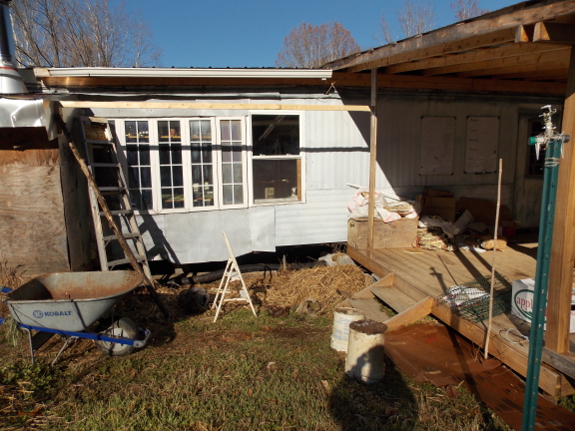
I mentioned in yesterday's post that The Complete Book of Edible Landscaping got me 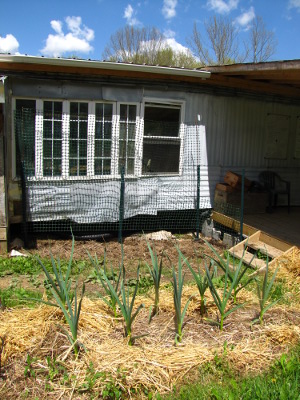 thinking
in more depth about what we want to do in front of our bank of
south-facing windows. These windows do a remarkable job of heating
the trailer on sunny winter days, but, unfortunately, they do nearly as
good of a job of heating the trailer on sunny summer
days. In a perfect world, we'd plant a big shade tree here, but
that would block out light to my vegetable garden, so I'm instead using
vines on an arbor to reflect the summer heat while letting in winter
sun.
thinking
in more depth about what we want to do in front of our bank of
south-facing windows. These windows do a remarkable job of heating
the trailer on sunny winter days, but, unfortunately, they do nearly as
good of a job of heating the trailer on sunny summer
days. In a perfect world, we'd plant a big shade tree here, but
that would block out light to my vegetable garden, so I'm instead using
vines on an arbor to reflect the summer heat while letting in winter
sun.
This spring, I tried out version 1.0
using a simple pea trellis and scarlet runner beans (shown to the
right). I'm glad of the experiment because it proved to me that
this area is way too waterlogged to plant directly into the
ground. In preparation for version 2.0, Kayla and I dumped weeds
in front of the trailer all summer, and by November, I had some great
topsoil to shovel up into two mounds, one on each side of the row of
windows.
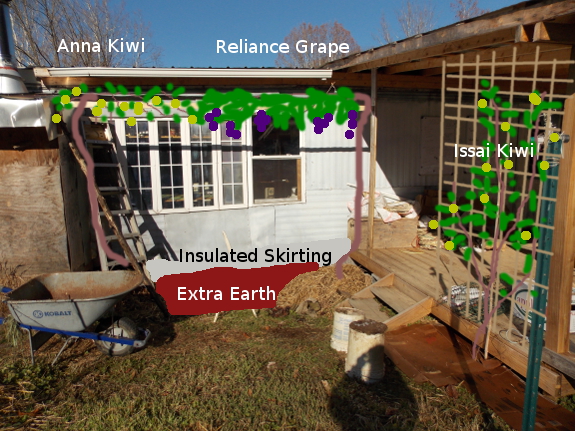
This picture shows what I
imagine the area will look like in five years if everything goes
according to plan. I've already put in the Issai kiwi (this
summer) and the Reliance grape (last month), and the Anna kiwi will be
arriving this spring. The last two were planted in those mounds I
mentioned, and Mark pointed out that we have some good soil that needs
to be excavated near the goat path, which will allow me to fill in
between the two mounds for later root development. I also plan to
finally install the downspout to channel that area's roof water into the
greywater wetland, and Mark's going to upgrade the trellis he started
to make it strong enough to handle two heavy vines, while also making a
lattice on the edge of the porch for the Issai kiwi. (I think
we'll also make the trellis a little higher since the photos above
illustrate how the current height will still shade the windows quite a
bit in the winter.)
The part I haven't
decided yet doesn't actually have anything to do with the plant life,
although it does relate to trailer temperature modification.
Eventually, we want to skirt the whole trailer, but that's a long-term
project that hasn't made it onto the to-do list yet. In the
meantime, I figured we'd better skirt this one little area now before I
start mounding up earth and planting long-lived perennials. I
found several interesting websites while researching the skirting topic
and discovered that there are at least two schools of thought on how to
moderate the floor temperature of a trailer:
- Use plain skirting around the outsides, then lay down a vapor
barrier on the ground under the trailer with polystyrene foam over
top. This is recommended by the extension service in Alaska.
Related alternatives involve blowing foam insulation into the belly
(area between the frame and ground inside the skirting) or making a
false floor below the frame to hold insulation right up against the
underside of your floor.
- Make your own insulated skirting around the perimeter of the trailer using polystyrene foam attached to treated two-by-fours on the ground and to the bottom of the trailer. This option is usually then covered by traditional skirting or paneling of some kind on the outside. No one talks about this, but it seems like you might get better results if you buried the bottom of the insulated skirting a foot or so into the soil?
 In Trailersteading (free today!), one of our readers
skirted his home with the insulated centers cut out of doors before
installing windows (shown to the right). That sounds like the
optimal skirting material, but I'm afraid we don't have a source
here. Any other ideas or feelings on which of the two skirting
options above makes the most sense?
In Trailersteading (free today!), one of our readers
skirted his home with the insulated centers cut out of doors before
installing windows (shown to the right). That sounds like the
optimal skirting material, but I'm afraid we don't have a source
here. Any other ideas or feelings on which of the two skirting
options above makes the most sense?
Finally, I'm considering the
utility of stones or cinderblocks used as thermal mass in this
area. Hardy kiwis are damaged by late-spring frosts in our area
and grapes tend to succumb to fungal diseases during our wet summers, so
I figure both plants would enjoy some extra heat gained by covering the
ground with stones between their feet. Rosalind Creasy agreed,
noting that a patio in front of the south-facing wall of our house can
even help heat the home by radiating heat during winter nights (assuming
you can shade the stones enough in the summer so they don't bake you
then). Which brings me to question number two --- would I be
better off using cinder blocks instead of traditional skirting in this
one zone of the trailer to provide yet more thermal mass?
Anyone who made it through this long post ---
you deserve a gold star! Here's your bonus --- did you know that
evergreen shrubs and vines up against the north side of a house can act
as exterior insulation, producing a pocket of air that makes your house
stay warmer? And did you know that I'll be able to guess how much
our trellis will shade the windows in the summer by going out at
midnight under a winter full moon --- the moon shadows will mimic sun
shadows six months later. Tips courtesy of Rosalind Creasy.
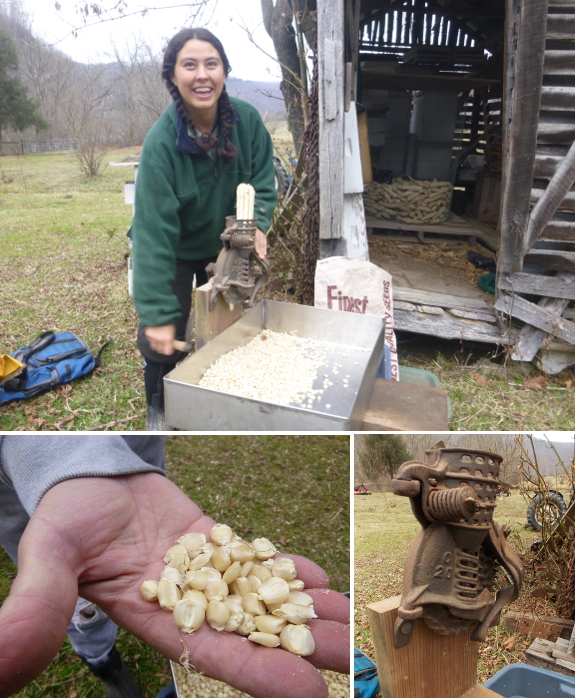
You would have thought Anna was playing Agricola from the big smile on her face when she got to try out our neighbor's corn sheller.
She explained that she grew up shelling corn by grabbing a cob with two hands and twisting in opposite directions.
The sheller made short work of this weevily corn, which will give our chickens supplemental carbs this winter.
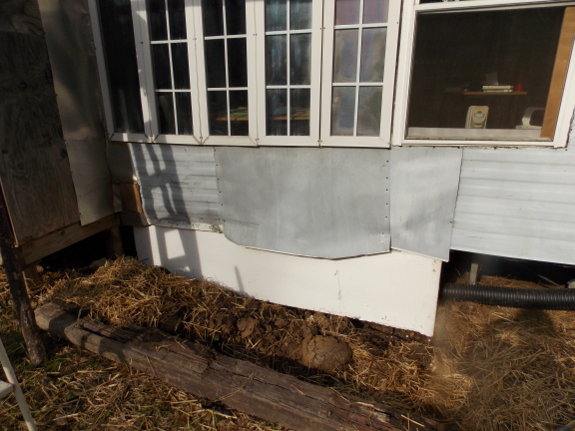
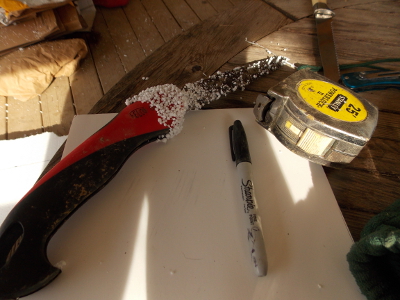 I left you hanging in yesterday's post
about our skirting decision, and while your thoughtful comments were
pouring in, I went outside to start experimenting. Mark had bought
me a four-foot-by-eight-foot-by-two-inch sheet of rigid-foam
insulation, unfaced because we wanted to buy from our local hardware
store (even though the options there are rather limited) rather than
driving an hour to Lowes. It turned out to be simple to cut the
insulation sheet to size with our hand saw
(much easier than using the utility knife I tried first). Digging
out a little bit of dirt where the insulation was going to go made it
relatively easy to slide the cut pieces into place.
I left you hanging in yesterday's post
about our skirting decision, and while your thoughtful comments were
pouring in, I went outside to start experimenting. Mark had bought
me a four-foot-by-eight-foot-by-two-inch sheet of rigid-foam
insulation, unfaced because we wanted to buy from our local hardware
store (even though the options there are rather limited) rather than
driving an hour to Lowes. It turned out to be simple to cut the
insulation sheet to size with our hand saw
(much easier than using the utility knife I tried first). Digging
out a little bit of dirt where the insulation was going to go made it
relatively easy to slide the cut pieces into place.
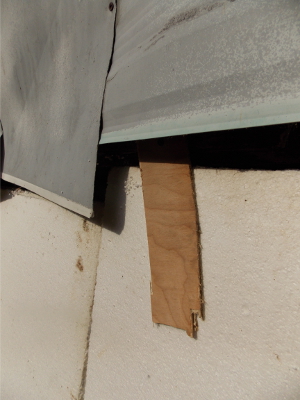 From
my perusal of the internet before beginning, I'd thought I'd need to
make a bottom rail for the insulation to attach to and to use button
nails to attach the top of the insulation to the underside of the
trailer. But once I got the insulation wedged into place, it
became clear it wasn't going anywhere, so I skipped that step. I
did use a bit of scrap wood to push one piece back so it lined up with
the other, though.
From
my perusal of the internet before beginning, I'd thought I'd need to
make a bottom rail for the insulation to attach to and to use button
nails to attach the top of the insulation to the underside of the
trailer. But once I got the insulation wedged into place, it
became clear it wasn't going anywhere, so I skipped that step. I
did use a bit of scrap wood to push one piece back so it lined up with
the other, though.
The corrugated pipe we're using to send water from our (as-yet-hypothetical) downspout to our greywater wetland
goes under the trailer, and I'd originally planned to cut a hole in the
insulation to let the pipe through. But as I worked, I figured it
would be simpler to dig down a bit and send the pipe underneath (as you
can see in the photo below). As I type this, though, I'm
wondering if that's a good idea, since the pipe will go down and then
slightly up, meaning a bit of water will pool in the lowest point and
will probably freeze in the winter. I guess we'll wait and see if
that's an issue, or maybe I'll fix the problem before Mark installs the
downspout.
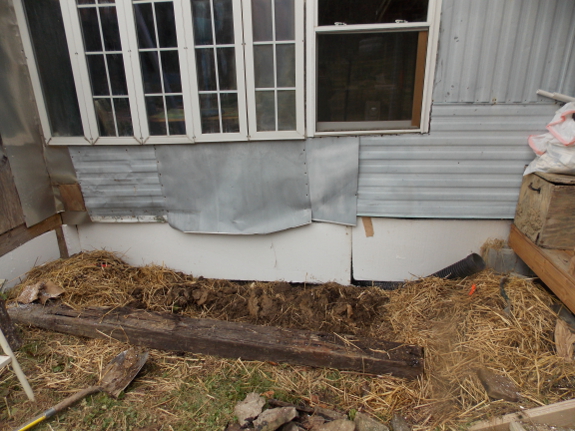
You'll notice there are a
few small cracks between the sheets of foam in the photo above. I
went back and forth on these, at first thinking I'd seal them with
reflective tape, but then realizing that the flashing I planned on
putting on the outside would do the same job. When I finally crawl
underneath to deal with the problematic insulation under the floor (one
of these days...), I may use some spray-foam insulation to fill in
these gaps.
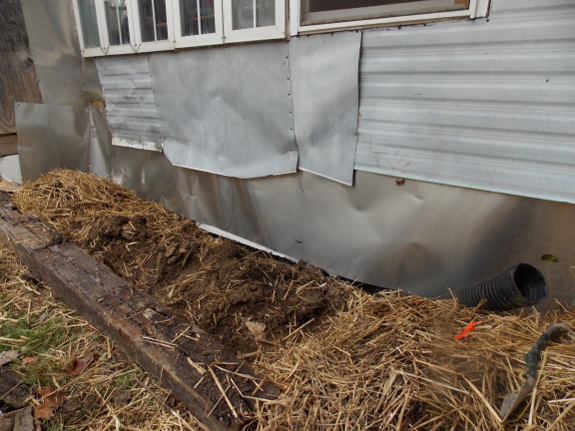
Rigid-foam insulation
isn't supposed to deal well with either UV damage or water, so it needs
some kind of outer layer. We could have bought skirting made for
trailers, but flashing is so easy to work with (and is always on hand),
so I decided to give that a try instead. After I took this photo, I
backfilled some earth around the base (and will add even more dirt
later to increase the height of the planting bed), so the gap at the
bottom shown in the photo above is already long gone.
This small part of the
skirting project was so fun and easy, it made me wonder why we've been
putting off skirting for so long. Then I remembered that I want to
replace the disintegrating insulation under the trailer floor before we
make it even harder to work under there by closing the space in.
We may need to bite the bullet and do that before summer, though, since
the back of the insulation sheets I installed this week are currently
exposed under the trailer, and free-range chicks adore pecking at
styrofoam....
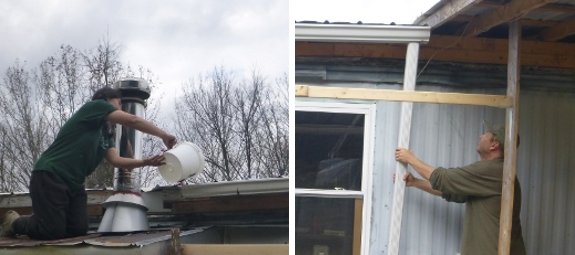
We installed a downspout, but
realized afterward that it's on the wrong side.
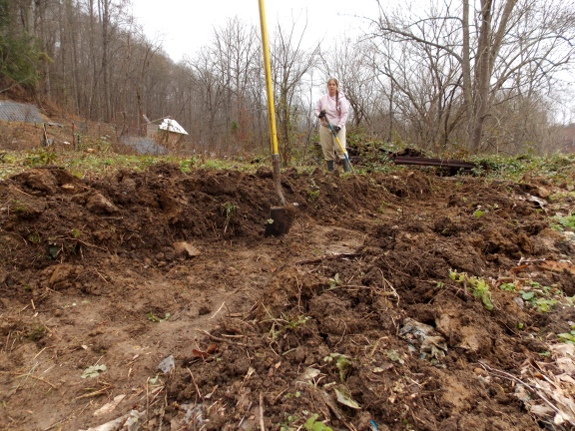
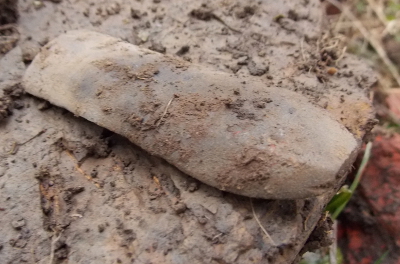 The spot where the old farmhouse
used to sit has been earmarked for years as the future site of an
experimental nursery, but this was the first year we planted into the
area. Mark started reclaiming the spot about a year ago, a process
that involved of lots of weedeating to kill off blackberries and
honeysuckle, plus digging out huge poke stumps. Last fall, I
kill-mulched one bed on the side closest to the trailer, using double my
usual thickness of cardboard (two layers instead of one), and that bed
still came up in blackberries and was a problem over the summer.
So I decided to lower my standards and dig out all the roots in that and
another new bed instead of kill mulching for next year.
The spot where the old farmhouse
used to sit has been earmarked for years as the future site of an
experimental nursery, but this was the first year we planted into the
area. Mark started reclaiming the spot about a year ago, a process
that involved of lots of weedeating to kill off blackberries and
honeysuckle, plus digging out huge poke stumps. Last fall, I
kill-mulched one bed on the side closest to the trailer, using double my
usual thickness of cardboard (two layers instead of one), and that bed
still came up in blackberries and was a problem over the summer.
So I decided to lower my standards and dig out all the roots in that and
another new bed instead of kill mulching for next year.
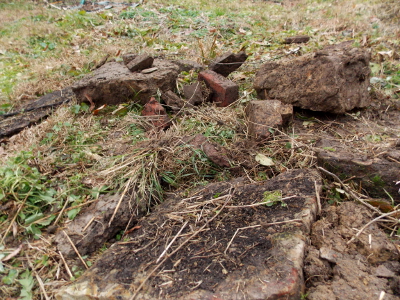 And I'm glad I did! After a week of Thanksgiving eating and writing, shoveling
really hit the spot. I've decided the biggest problem with
no-till gardening is that you don't get to dig often, and I love to dig,
so projects like this make my day.
And I'm glad I did! After a week of Thanksgiving eating and writing, shoveling
really hit the spot. I've decided the biggest problem with
no-till gardening is that you don't get to dig often, and I love to dig,
so projects like this make my day.
But it was also good to
dig that area for more serious reasons. There were lots of big
roots, including one blackberry root mass about the size of a
four-year-old fruit tree, so I suspect it would have taken at least two
more years of mowing before a kill mulch in that area would take.
Plus, the Appalachian foundation of piled up rocks means Kayla and I
disinterred more stones during our digging project than Mark and I have
found during the entire rest 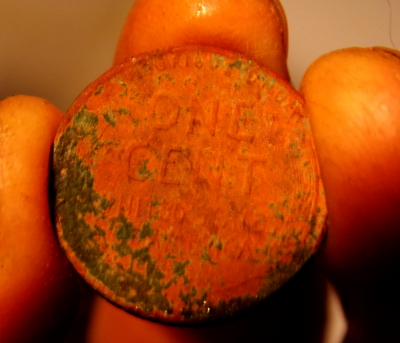 of our time on the farm. The timing was perfect since I want rocks to use around my new grape and didn't have any on hand.
of our time on the farm. The timing was perfect since I want rocks to use around my new grape and didn't have any on hand.
And then there's the pure
pleasure of finding ancient possessions in the soil around an old home
site. Sure, most of what we found was broken window glass and
rusty nails, but Kayla went home with two nice marbles and a little
ceramic container that looked like it might have held makeup or
ointment. And I found a rusty coin from 1951, probably not worth
much, but fascinating for the notion that it was being held in someone's
hand sixty years ago. I think the second picture from the top
might be an old whetstone too?
If I get industrious
again, we've got about three more beds we could dig out in the old house
area, but since I've got other digging projects on the front burner, I
might let Mark mow those areas for another year first. Either way,
it's exciting to have two long beds to fill with experimental
perennials --- more on that in a later post.
Our White Leghorn hen
who likes to eat crayfish
had a close call this week.
A hawk tried to swoop down
and take her away, but once Lucy heard the noise our rooster was making
from the other side of the fence she ran to the scene with enough
aggressive barking to scare the predator away.
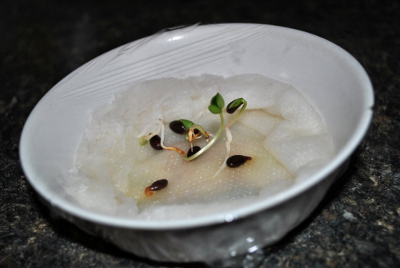 Ever since I read the apple chapter in The Botany of Desire,
I've wanted to plant some apple seeds and see if my toss of the dice
turns up a new variety worth keeping. What held me back then was
that I didn't have any land to plant on. And after we got our farm,
I figured I'd have to set aside an absurd amount of space for the
experiment since each tree would be a standard apple, meaning they'd
need to be planted at least 30 feet apart.
Ever since I read the apple chapter in The Botany of Desire,
I've wanted to plant some apple seeds and see if my toss of the dice
turns up a new variety worth keeping. What held me back then was
that I didn't have any land to plant on. And after we got our farm,
I figured I'd have to set aside an absurd amount of space for the
experiment since each tree would be a standard apple, meaning they'd
need to be planted at least 30 feet apart.
But then I started playing with high-density methods,
and learned that judicious pruning and training can make even large
trees small. So I started pondering --- could I plant seeds three
feet apart as if I were making a high-density apple planting, then use
that test orchard to try out seedling genetics? Presumably, it
might still be five or more years before I'd get a taste of these
experimental trees, but that still gives me time for many apple
generations in my lifetime. And if any of the seedling apples are
worth experimenting with further, I can either transplant the tree or
graft its scionwood onto a smaller rootstock. Worst case scenario,
I get a lot of firewood out of the deal.
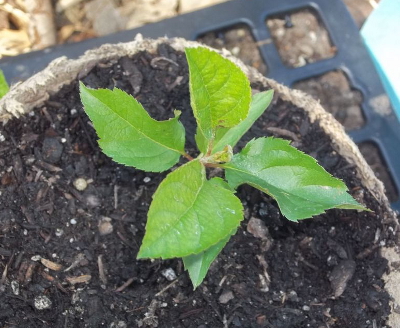 The
pros tend to plant somewhere between 10,000 and 50,000 seeds to get one
variety worth keeping, and I'd definitely plant many, many fewer.
But it's more fun that going to Vegas --- my kind of gambling.
Want to play?
The
pros tend to plant somewhere between 10,000 and 50,000 seeds to get one
variety worth keeping, and I'd definitely plant many, many fewer.
But it's more fun that going to Vegas --- my kind of gambling.
Want to play?
I'm looking for some
interesting seeds to start my planting, and I promise to name the new
variety after you if you're the source of the seeds. Drop me an email
if you're interested with the name of the mother variety and the
possible fathers (other apple trees close to your tree). I'm
less interested in store-bought apples because the father in that case
is often a crabapple, included in the planting to fertilize the named
varieties, and I'm most interested in off-spring of these disease-resistant apple varieties.
Or you can play along at
home! Here's what I plan to do --- put each batch of cleaned apple
seeds in a labeled ziplock bag surrounded by a damp rag (or paper towel
if you roll that way). Apple seeds need at least a month of cold stratification, so the bag will go in the 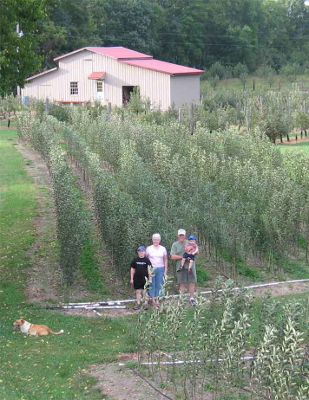 fridge,
and I'll start checking on it weekly after the month is up. Once I
start to see sprouts, I'll transfer the seeds to a pot, and then,
eventually, to a nursery row.
Alternatively, you can get the same stratification effect by planting
your seeds directly in the ground right now, allowing them to go through
a normal winter. Either way, expect only about 30% germination,
so plant lots of seeds.
fridge,
and I'll start checking on it weekly after the month is up. Once I
start to see sprouts, I'll transfer the seeds to a pot, and then,
eventually, to a nursery row.
Alternatively, you can get the same stratification effect by planting
your seeds directly in the ground right now, allowing them to go through
a normal winter. Either way, expect only about 30% germination,
so plant lots of seeds.
As a final side note, if
you've got the space for standard trees, you might plant seeds for
another reason --- to serve as rootstocks to be grafted onto. Many
people will plant a dozen or more seeds where they want the eventual
tree to grow, then will weed out all but the most vigorous specimen a
year later. After grafting, these experimenters get a tree with no
transplant shock. Although I've never heard anyone else say this,
it seems to me you could also get at least a little bit of dwarfing
action from seedling rootstocks if you choose seeds from less vigorous
varieties (like crabapples, self-pollinated Cox's Orange Pippin, Lady, and spur-type Winter Banana and York), or if you choose the least
vigorous seedling when it comes time to weed out your planting.
I'd be very curious to hear from anyone who's used seedlings as
rootstocks --- how did your trees turn out?
(As a final note, these photos aren't mine --- as usual, click to see the source.)
When we first got chickens
Lucy was a lot younger and very excited about these new feathered
friends we were introducing to the farm.
It took about 10 minutes to
train Lucy to leave all the chickens alone.
We put her on a leash, walked
her over to a chicken in a tractor and made her sit with her back
facing the tractor. She was excited and kept looking over at the
chicken, but each time I would bring her attention back to me while at
the same time saying with as much authority as I could muster "Our
chickens!.." This went on for about 10 minutes before she seemed to
figure it out and stopped being curious about the chickens.
I think walking her everyday
also helps to anchor the training, but the lesson was taken directly
out of Cesar Millan's book called "Cesar's Way", which might be the best
dog training book available at this time.
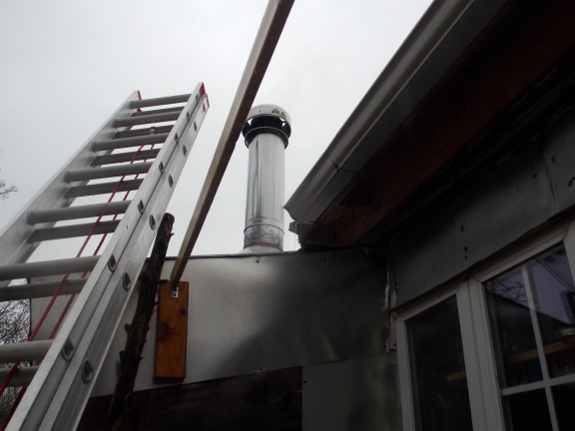
It turns out that Rhonda is on the right track --- the gutters on our
roof would have been installed correctly if the whole trailer didn't
tilt
toward the west. It started raining, so we haven't finished the
project yet, but I think we're going to first try taking out the screws
that attach the gutter to the side of the roof, then will give the
gutter more of a
tilt, if possible, so we can keep the downspout where it is.
Worst-case scenario, we'll move the downspout to the other end.
Interestingly, in a heavy rain Friday morning, I noticed that the
downspout seemed to be working pretty well despite the incorrect
tilt. Sure, a bit of water was drizzling out the other end, but
most of the roof runoff appeared to be going down the downspout and into
the greywater wetland, which seemed well able to handle the extra water.
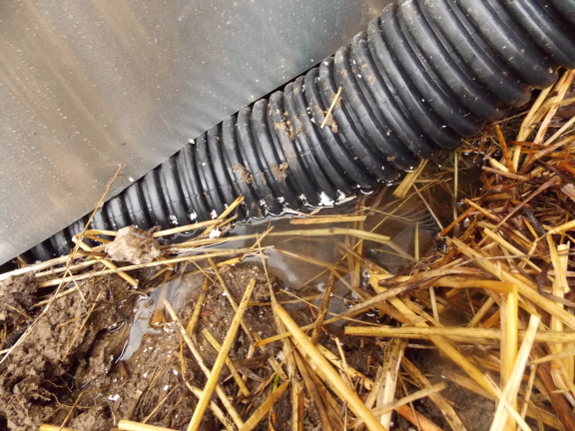
On the downside, it turns out that the high groundwater in that spot
isn't entirely due to water pouring off the trailer roof right
there. Even with that rain being captured by the downspout, water
was pooling right at the surface, meaning I need to keep working if I
don't want the grape and kiwi I'll be installing there to drown.
I'm hoping the extra water comes from the other downspout twelve feet
uphill which spits out water falling on the front porch, but I haven't
quite decided if there's a solution short of channeling that water into
the greywater wetland too. I'd like to have a rain barrel at the
corner of the porch to make watering seedlings easier in the summer, but
we get so much rain that the barrel would do no good in the winter.
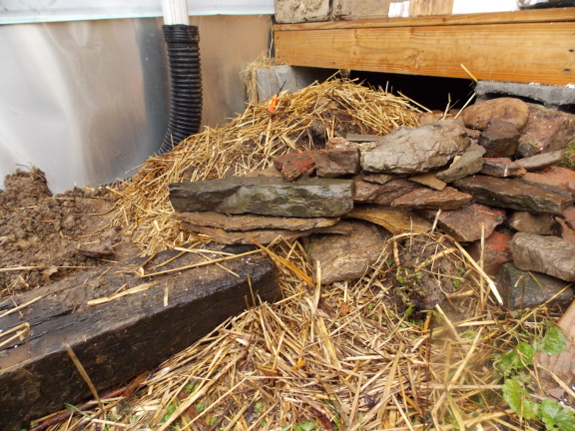
Finally, just for fun, I
piled up lots of rocks around the kiwi and grape mounds. Hopefully
these will act as thermal mass and they'll definitely make the plants
more visible so they won't accidentally get weedeaten. And we're
also thinking of taking Brian's advice
and making the trellis out of wire since he makes an excellent point
about the shade potential of lumber. I can't wait to see this area
in full greenery in summer 2014!
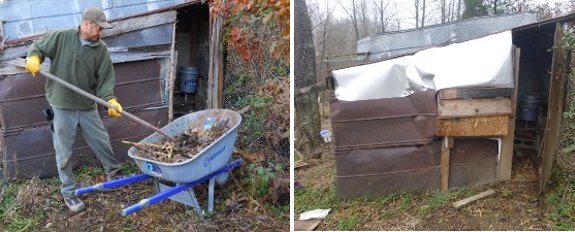
It's been a year since I
talked about problems
with one of our chicken coops.
The new double nesting box
has helped with egg access, but I think I could've got away with just
one nest because the days I've noticed both nest boxes being used was
maybe twice.
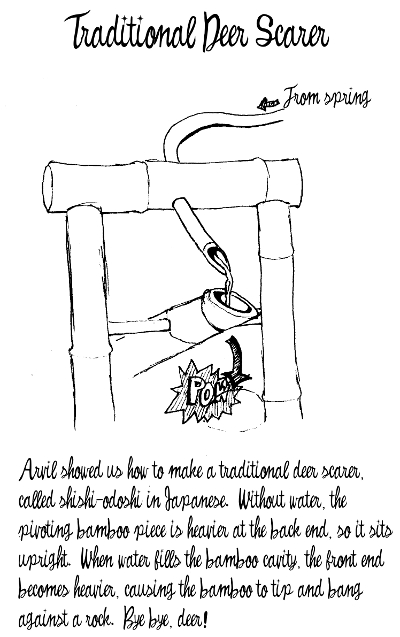 If all goes as planned, you'll get to read Watermelon Summer, my first young-adult novel,
in about a week. The title is courtesy of my father, who also
talked me out of my last-minute jitters and told me the third draft was
ready to fly. (After it gets back from the copy-editor, that
is.)
If all goes as planned, you'll get to read Watermelon Summer, my first young-adult novel,
in about a week. The title is courtesy of my father, who also
talked me out of my last-minute jitters and told me the third draft was
ready to fly. (After it gets back from the copy-editor, that
is.)
I don't have a cover yet (although I'm starting to envision one based on
a heart-shaped piece of watermelon), but I did add a few "Excerpts from
Thia's Notebook" to the back, of which the image here is one
page. As you can tell, the protagonist deals with some of the same
issues Mark and I have, although her solutions are often different from
ours. In fact, even though young adult isn't everyone's genre, I
think most of our blog readers will get a kick out of this little book
because it captures many truths about our homesteading experience that
are too personal to make it to the blog.
I'm going to use Watermelon Summer
as my first experiment with print-on-demand paperbacks too, although I
suspect it might take an extra week or two after the ebook becomes
available before you can buy a paperback. I may be dreaming, but I
like to imagine actual young people ending up with a copy of this book
and deciding that they want to homestead and perhaps explore the idea of
intentional community. Thus a print copy that's easy to pass
around and turn up in a used book store.
I hope you're engrossed in fun projects as well! Thanks for reading my ramblings.
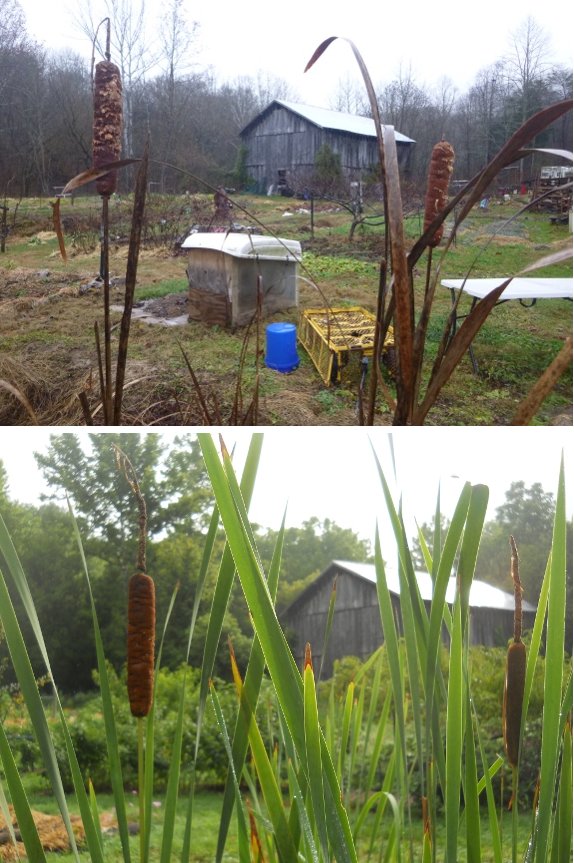
The rain paused enough today
for me to go out and take this cattail comparison photo.
It's a lot less green then it
was 90 days ago....but it will be back in about the same time.
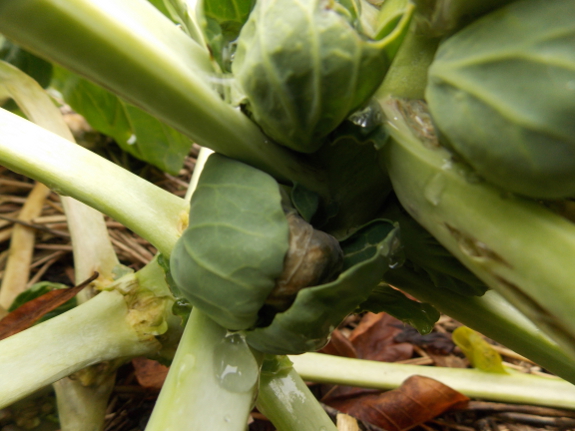
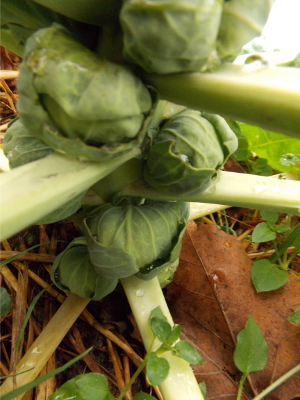 A month ago, when I erected quick hoops two through four,
one of our readers asked why I was devoting a quarter of that protected
space to Brussels sprouts. After all, the vegetable is supremely
cold-hardy, right? So wouldn't it be fine out in the open?
A month ago, when I erected quick hoops two through four,
one of our readers asked why I was devoting a quarter of that protected
space to Brussels sprouts. After all, the vegetable is supremely
cold-hardy, right? So wouldn't it be fine out in the open?
The photo at the top of
this post shows what happens to unprotected Brussels sprouts when
temperatures drop into the teens. The leaves tend to be fine, but
the sprouts themselves get nipped. Frost-nipped sprouts are
edible, but aren't quite as tasty, and if you don't eat them right away,
they start to rot.
In contrast, the photo to
the right shows one of the plants under the quick hoops. Lots of
tasty sprouts, undamaged by frost, and just waiting to be Christmas
dinner! We're eating the unprotected sprouts pretty hard right
now, even plucking the not-quite-solid heads, because temperatures are
forecast to droop back into the teens (or at least low twenties) this
week. Since Brussels sprouts are among Mark's top-ten favorite
foods, I haven't heard any complaints, but maybe that's because my
favorite Brussels-sprouts recipe starts with four slices of bacon....
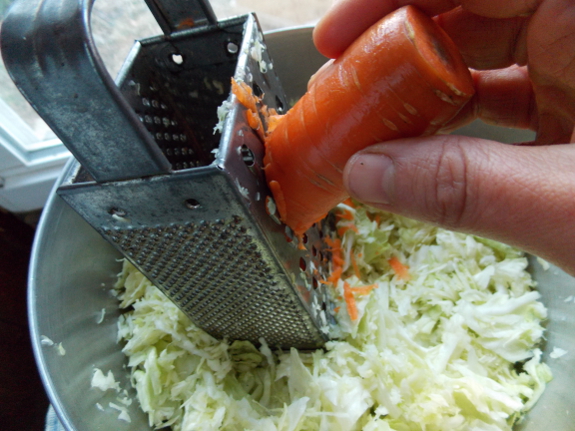
In other Brassica-oleracea
news, it's also time to finish eating up all of the cabbages that have
been stored in the bottom of the fridge for the last month or so.
Our spring cabbages all go into soup base, but fall cabbages have more
life choices, sometimes being eaten plain as a raw finger vegetable,
sometimes being mixed with meat to make potstickers, sometimes getting
roasted (although they never taste as good as roast Brussels sprouts),
and sometimes going into experimental dishes like the
non-mayonaisse-based cole slaw I'm making above.
I clearly need to step it
up a notch, though, because we've got three heads left with outer
leaves turning brown that need to get eaten soon. What cabbage
recipes would you recommend for people who don't like traditional cole
slaw and don't enjoy sauerkraut?
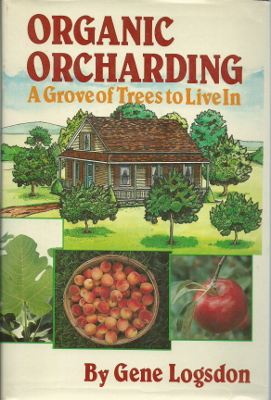 "The decision to start an orchard
involves a decision to stay put. The first plant you want to get rooted
in the earth is yourself. That's what makes home orchards so valuable;
where they abound, they speak eloquently of a stable and responsible
community, the first necessity of a healthy civilization and a happy
culture."
"The decision to start an orchard
involves a decision to stay put. The first plant you want to get rooted
in the earth is yourself. That's what makes home orchards so valuable;
where they abound, they speak eloquently of a stable and responsible
community, the first necessity of a healthy civilization and a happy
culture."
I've owned a copy of Gene Logsdon's Organic Orcharding
since I was in high school, but I don't think I ever read it until this
year. I do recall flipping through the book and dreaming about my
very own fruit trees, but am pretty sure I skipped the all-important
chapters on pest control and didn't read the other how-to chapters with a
very critical eye. So I figured it was time for a more thorough
re-read.
At the time, I also
didn't realize that Gene Logsdon was one of the great homesteading
authors who writes from personal experience, but with a dash of
experimental optimism. In fact, having read at least half a dozen
of his books so far, I'd say that Organic Orcharding is possibly his best --- too bad it's out of print!
Luckily for you, I plan to sum up the highlights in this week's lunchtime series. Stay tuned!
| This post is part of our Organic Orcharding lunchtime series.
Read all of the entries: |
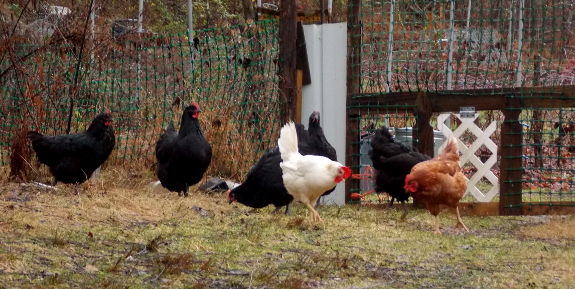
We took part of the morning
off due to the rain soaked ground and cloudy skies.
It might take another day or
two for the creek to go down, but the chickens seem to be making up for
lost time after being cooped up most of the weekend.
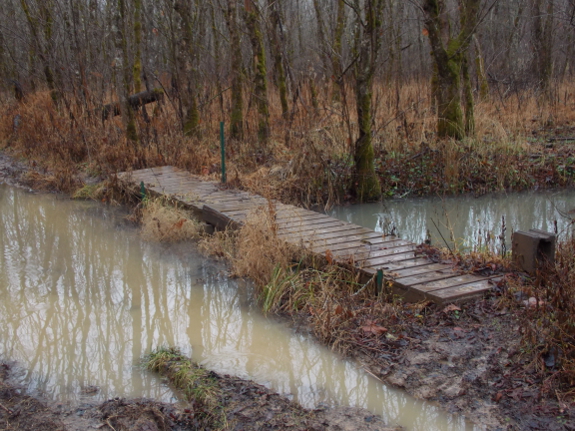
"Why should only the outside world get time off for bad weather?" Mark asked Sunday. Before I knew it, I'd agreed to a one-hour delay on Monday morning.
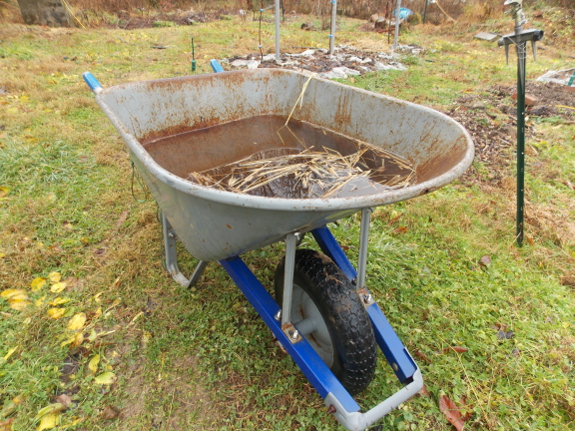
And it was
a good day to sleep in. A full weekend of rain had filled my
wheelbarrow rain gauge and set the creek into moderate-flood mode.
(Moderate flood means we can't get out with hip waders, but I could
walk nearly all the way to the ford without being impacted by high
water.) Don't worry, rust-phobes, I flipped the wheelbarrow on its
side after taking this picture.
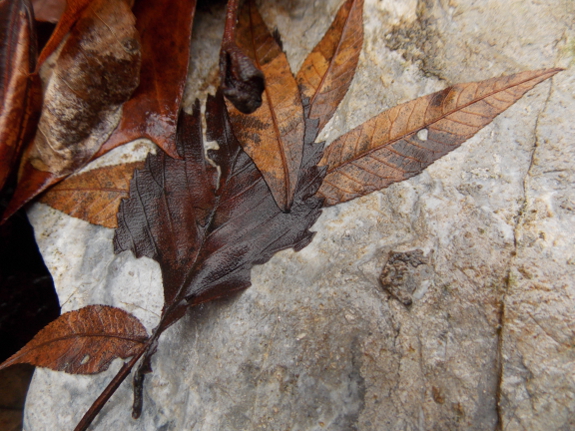
The flood reminds me that
winter is a season of tough choices for homesteaders. Do you
relax and soak up the peace and quiet in preparation for next year's
growing season? Or do you take advantage of days without pressing
plants and animals to get some big-picture projects done? Mark
leans toward the first option and I lean toward the second, so we meet
in the middle --- we slow down some, but also slip in projects
non-essential enough that they never make the cut during the growing
season. (And I get extra time to write.)
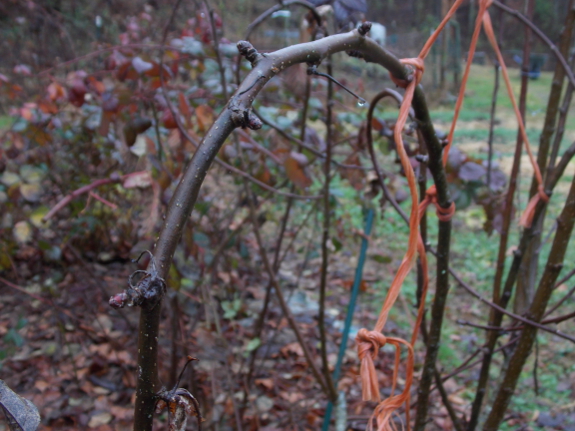
Winter is also a good
time to catch up on blog posts that didn't make it into the summer
queue. For example, I seem to have never mentioned how I
experimented with tempting our seven-year-old-but-not-yet-fruited dwarf
Yellow Transparent to make fruit buds. The problem tree was slated
for removal this spring since it sent up scads of watersprouts in 2012
after I pruned to remove extensive cicada damage.
But I decided to tie each long, vertical twig into a loop instead, and
the trickery does seem to have promoted the formation of fruiting
spurs! I'll keep you posted next year about whether actual flowers
are forthcoming.
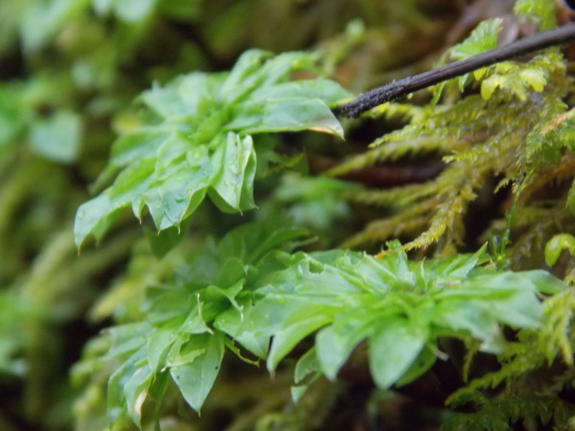
What big-picture projects are you slipping in between snow storms?
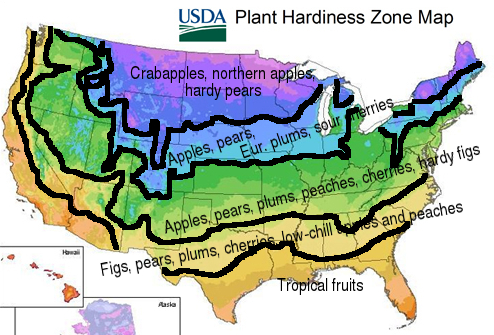
There's a reason I loved flipping through Organic Orcharding
before we got our farm --- it's a great book to dream by. Or, if
you want to pretend you're being scientific, you can use the excellent
charts for variety selection. For example, Logsdon recommends
starting your orchard planning by learning which species do well in
your climate. The map above hits the highlights, making it clear
that you really want to live in zone 6 or 7 if you plan to grow all
sorts of temperate fruits. Zone 8 is pretty good too, although
you'll need to choose low-chill apples and peaches, and colder zones
start restricting your choices pretty quickly.
Your next stop should be
Logsdon's excellent ripening-order charts, which I won't recreate here,
but which you can find on pages 28 and 50. While you're thinking
about seasonality,
you'll also want to consider adding some winter storers so you can
enjoy homegrown fruit after the snows fly. Logsdon doesn't list
storage times for pears (the other good storage fruit), but he does
include a handy chart of apple storage periods:
| Average storage months |
Maximum storage months |
|
| Grimes Golden |
2-3 |
4 |
| Jonathan |
2-3 |
4 |
| McIntosh |
2-4 |
5 |
| Cortland |
3-4 |
5 |
| Golden Delicious |
3-4 |
6 |
| Northern Spy |
4-5 |
6 |
| Red Delicious |
3-4 |
6 |
| Rhode Island Greening |
3-4 |
6 |
| Stayman Winesap |
4-5 |
6 |
| York |
4-5 |
6 |
| Rome Beauty |
4-5 |
7 |
| Winesap |
5-7 |
8 |
| Yellow Newton |
5-6 |
8 |
Finally, you
should take into account how much fruit your family can really
eat. Logsdon includes the yield figures below, which seem to be on
the low side according to some sources (which I've added
parenthetically). However, his figures might be the most realistic
for a chemical-free backyard orchardist.
| Species |
Estimated yield |
Apple:
|
|
| Pear |
3 bushels (up to 8 according to some sources) |
| Peach or nectarine |
3 bushels (up to 6 according to some sources) |
| Plum or apricot |
2 bushels (up to 6 according to some sources) |
| Cherry |
1 bushel (up to 3 according to some sources) |
I hope these charts help
you out if you're still in the planning stages. You may also get
some handy information out of my 99 cent ebook, Weekend Homesteader: December. Meanwhile, if you're ready to choose varieties and put trees in the ground, stay tuned for tips in later posts.
| This post is part of our Organic Orcharding lunchtime series.
Read all of the entries: |
Another wet and cold day inspired me to move some furniture around.
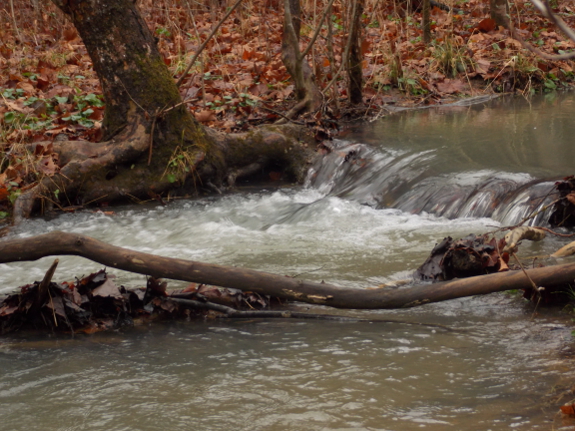
I realized Monday that
I'd never explored all the way up the holler behind our farm. When
we first moved here, I didn't want to trespass on someone else's
property, but a year or so ago, the owner of that property mentioned
that he didn't mind if I walked there since we let his son hunt down
onto the adjacent parts of our property. So I set off with the
camera to explore.
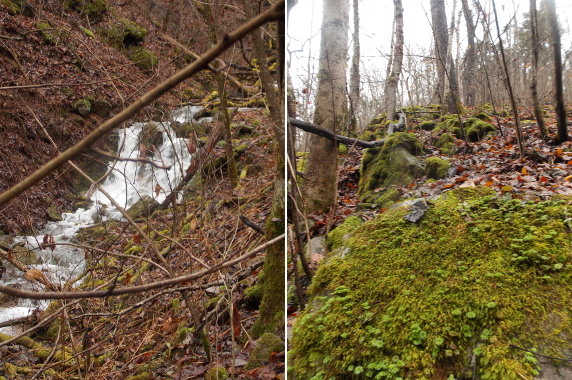
Long-time readers will
know that our farm seems to completely lack rocks --- not so up the
holler! Before long, I came across mossy boulder fields,
rock-loving ferns and liverworts, and even a pretty waterfall.
Granted, our main creek was at flood stage, so this waterfall on the
little spur creek might not exist in dry weather.
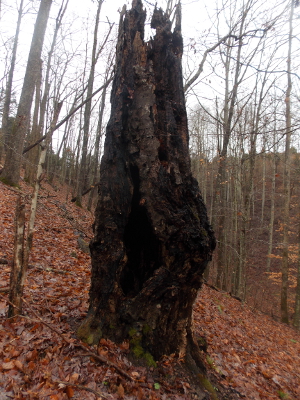 After
about half a mile climbing straight up, an old tire in the creek
suggested I was approaching civilization, so I looped back toward home,
this time walking on contour along the side of the hill. Along the
way, I discovered another perfect stump-dirt tree,
but I had nothing to collect the prime potting soil in (and doubt I'll
climb that high with a bucket). This tree is an ancient beech just
like my favorite stump-dirt tree, suggesting that something about that
species makes the best potting soil --- I've rooted around in the rotten
center of many other trees without finding such black gold. Maybe
rotting beech wood hosts a particularly good species of fungus or
beetle?
After
about half a mile climbing straight up, an old tire in the creek
suggested I was approaching civilization, so I looped back toward home,
this time walking on contour along the side of the hill. Along the
way, I discovered another perfect stump-dirt tree,
but I had nothing to collect the prime potting soil in (and doubt I'll
climb that high with a bucket). This tree is an ancient beech just
like my favorite stump-dirt tree, suggesting that something about that
species makes the best potting soil --- I've rooted around in the rotten
center of many other trees without finding such black gold. Maybe
rotting beech wood hosts a particularly good species of fungus or
beetle?
I'm afraid that after the halfway point, though, I stopped taking photos and started writing the sequel to Watermelon Summer
in my head. Oops. I really meant to write a non-fiction
ebook or two before scratching that itch, but it'll probably be good for
me to at least start another fiction piece while all of the lessons of
the first are fresh in my mind. And if people like the fiction, the sequel will be ready to go that much sooner.
I hope you're taking advantage of the winter lull to explore the wider world!
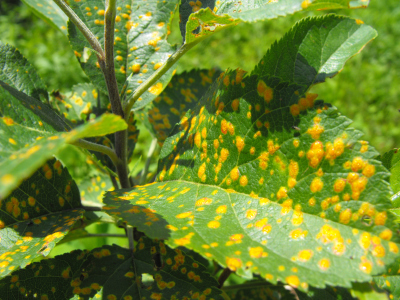 One of my favorite parts of Organic Orcharding
was comparing Logsdon's take on disease-resistant fruit varieties to
the selections chosen by more-modern authors like Lee Reich and Michael
Phillips. In case you're a new reader, you might want to start out
by browsing over these posts:
One of my favorite parts of Organic Orcharding
was comparing Logsdon's take on disease-resistant fruit varieties to
the selections chosen by more-modern authors like Lee Reich and Michael
Phillips. In case you're a new reader, you might want to start out
by browsing over these posts:
What's fascinating when comparing Logsdon's list to those of other
authors is how few varieties appear on both --- apparently trees go out
of style over time, so Reich and Phillips might not have even
experimented with the fruits Logsdon swore by in the 1970s (and vice
versa). For example, although Logsdon's list of pears matches up
with the ones mentioned in the post linked above, most of his resistant
stone fruits aren't on the above lists. Here's 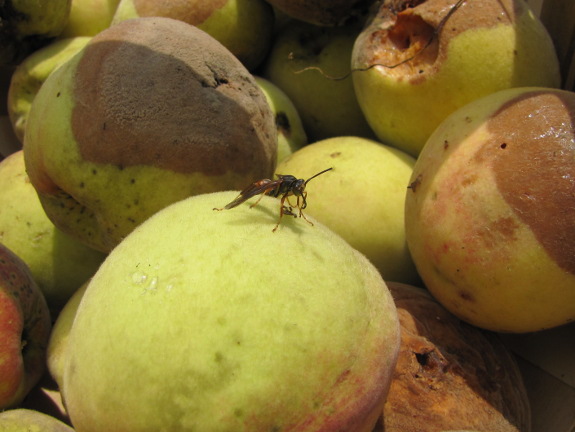 Logdon's selection of stone fruits resistant to brown rot in case you want to give them a shot:
Logdon's selection of stone fruits resistant to brown rot in case you want to give them a shot:
- Alberta, Belle of Georgia, and Redhaven peaches
- Hagan Sweet and Morton nectarine
- Greengage, Ozark Premier, Redheart, and Stanley plums
However, Logsdon does
agree with the other authors that sweet cherries and nectarines are
trouble in humid climates (unless you're willing to grow the cherry
rootstock Mazzard for its small but disease-resistant fruits).
Which brings us to apples. Phillips' extensive (although organic) spray regimen
makes modern readers believe apples are impossible to grow in a
chemical-free fashion, but Logsdon instead considers apples the most
reliable of high-quality fruit species. He makes the argument that
if you choose resistant varieties (see below), use the worst apples for
livestock, the okay ones for cider or cooking, and only expect a third
of your fruits to be dessert quality, you can grow apple trees without
any sprays at all. That sounds like a regiment a homesteader can
get behind!
| Scab |
Fire blight |
Cedar-apple rust |
Powdery mildew |
|
| Adanac |
R |
|||
| Akane |
R |
|||
| Astrachan |
R |
|||
| Baldwin |
R |
|||
| Ben Davis |
R |
|||
| Black Twig |
R |
|||
| Chehalis |
VR |
|||
| Duchess |
S |
R |
||
| Earliblaze |
R |
|||
| Golden Delicious |
R |
S |
S |
R |
| Grimes Golden |
VR |
R |
||
| Jonafree |
VR |
|||
| Jonathan |
R |
S |
S |
|
| Liberty |
I |
VR |
VR |
R |
| MacFree |
I |
|||
| Macoun |
R |
|||
| McIntosh |
S |
R |
S |
|
| Northwest Greening |
R |
|||
| Nova Easy-Grow |
I |
|||
| Prima |
I |
VR |
||
| Priscilla |
I |
VR |
||
| Red Baron |
R |
|||
| Red Delicious |
S |
R |
||
| Sir Prize |
I |
S |
||
| Spartan |
R |
|||
| State Fair |
R |
|||
| Stayman Winesap |
R |
|||
| Transparent |
R |
|||
| Tydeman's Early Red |
R |
|||
| Wagener |
R |
|||
| Winesap |
S |
R |
||
| York Imperial |
VR |
I hope that gives an idea
of where to get started if you want to plant a completely spray-free
orchard. If I run across more lists of resistant varieties in
other books, I'll be sure to update with another post.
| This post is part of our Organic Orcharding lunchtime series.
Read all of the entries: |
Our sky
pond is filled to the top with a healthy layer of ice on the top.
The trailer shades what
little sun would have hit this spot, which means it might take another
day or two before our recent duck visitor can fly south for the winter.
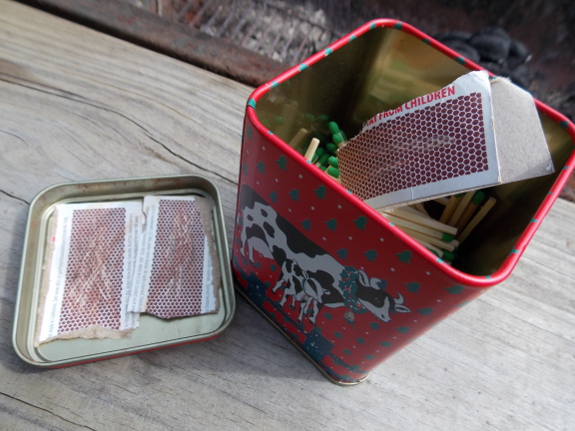 It
seems to be the trend this year for every blogger to post a holiday
gift guide, so I guess we'd better follow suit! I'll include some
specials on our own top products, plus a few gifts I heartily recommend
from the outside world.
It
seems to be the trend this year for every blogger to post a holiday
gift guide, so I guess we'd better follow suit! I'll include some
specials on our own top products, plus a few gifts I heartily recommend
from the outside world.
But first, don't forget home-made crafts! My mother's fire-starter tin
is still my favorite gift of the last year, and there are other good
ideas in the comments section of that post. Mark and I tend to
give gifts when the mood strikes rather than around any particular
holiday, and gifts that have been well-received this year include honey,
home-made jams, sweet potatoes, rooted fruit plants, and garlic.
Why not dig around the edges of your gooseberry bush and see if you've
got any baby plants to share with friends? Raspberries,
blackberries, comfrey, and perennial herbs are also likely to have
propagated themselves.
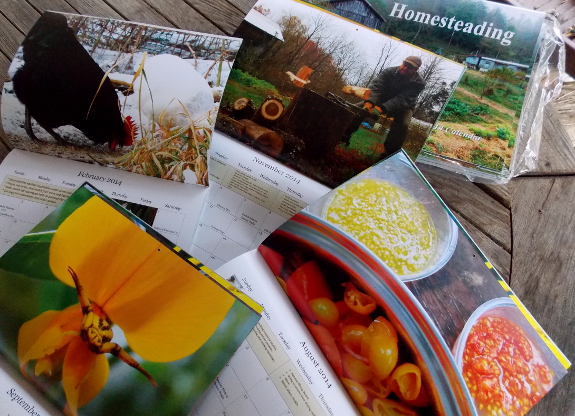 Okay, I know, some loved ones expect gifts with no dirt on them --- crazy people. We just put our homesteading calendar up on Amazon,
and we recommend this as a low-key way to trick non-homesteaders into
liking dirt. (Then you can give them one of the dirty gifts above
in 2014!) At the moment, our calendar is on sale for $5.99 + $3.99
S&H.
Okay, I know, some loved ones expect gifts with no dirt on them --- crazy people. We just put our homesteading calendar up on Amazon,
and we recommend this as a low-key way to trick non-homesteaders into
liking dirt. (Then you can give them one of the dirty gifts above
in 2014!) At the moment, our calendar is on sale for $5.99 + $3.99
S&H.
Or why not contact a
local farmer and buy some pastured meat for a loved one? The taste
alone will go a long way toward winning them over to the idea of
non-factory-farmed protein, and it will definitely boost their
health. If you live kinda close to us, my brother got some
pastured pork from these folks and it was delectable. You can also contact our pastured lamb supplier,
but I'm not sure if they have anything available at this time of
year. No matter where you find the pastured meat, it might be a
good idea to cook it up and invite your friends over for a holiday meal
and then send them home with the leftovers --- that way you can be sure
the meat will be cooked just right and will startle their taste buds.
What
about people who have been won over to homesteading, but who are just
getting started? A great option is a high-quality hand tool that
will last them the rest of their lives. The Trake is a cast-metal trowel that I use daily during the growing season, $22.65 on Amazon with free shipping on orders over $35. The Felco F-600 Hand Saw is so sharp it makes hand-cutting a breeze ($29.97 with free shipping available) and Mark's new RUKO knife looks like it's going to be our new favorite tool for butchering chickens and deer ($23.52 with free shipping available).
Vegetable seeds are
another good choice to give beginners. For people who have never
gardened before, I recommend leaf lettuce (mixtures are always fun),
Swiss chard (Fordhook giant is most winter hardy, but the ones with
colored stalks are striking), okra (Clemson spineless is our favorite),
summer squash (yellow crookneck avoids stem borers), and green beans (we
love Masai). This post will give you an idea of where to buy the seeds.
 Of course, if your loved ones have chickens, you know what I think you should get them --- chicken waterers. We have a hidden sale going on right now just for our most loyal readers --- 10% off our top products.
Do order these ASAP, though, since we can't guarantee they'll reach you
by Christmas unless you order this week! (Barring floods,
waterers you order early next week should arrive in time too.)
Of course, if your loved ones have chickens, you know what I think you should get them --- chicken waterers. We have a hidden sale going on right now just for our most loyal readers --- 10% off our top products.
Do order these ASAP, though, since we can't guarantee they'll reach you
by Christmas unless you order this week! (Barring floods,
waterers you order early next week should arrive in time too.)
Which brings me to books. The up-to-date homesteader could benefit from this year's top reads: Paradise Lot and The Resilient Farm and Homestead. If they're dreaming about livestock, it's hard to go wrong with the Storey Guides. And, if they've got a kindle you can browse all of my ebooks here. (As a side note, my publisher let me know that my paperback
is out of stock on Amazon because they're currently changing
distributors and shipping all of their books from one warehouse to the
other, but hopefully it'll be back up there soon.)
I hope that's enough
brainstorming to get you thinking on a homesteading track this holiday
season. And if you didn't see your favorite gift here, leave a
comment below.
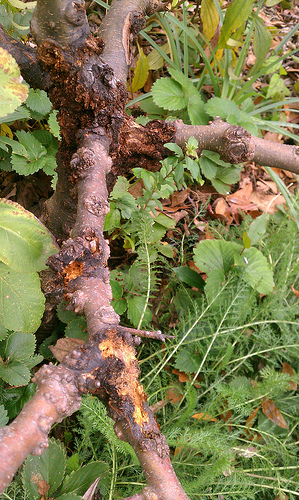 As I mentioned in my last post, Gene Logsdon's philosophy on dealing with pests and diseases is much less hard-core than Michael Phillips'
since the former is only growing food for his own table. In
general, Logsdon believes that as long as you can keep your fruit trees
alive, all other problems are cosmetic and can be treated or not as you
choose.
As I mentioned in my last post, Gene Logsdon's philosophy on dealing with pests and diseases is much less hard-core than Michael Phillips'
since the former is only growing food for his own table. In
general, Logsdon believes that as long as you can keep your fruit trees
alive, all other problems are cosmetic and can be treated or not as you
choose.
So how does
Logsdon deal with pests and diseases? He begins his
trouble-shooting by choosing resistant varieties (which I listed
previously), then moves on to low-key preventatives. For
fire-blight prevention, he recommends keeping nitrogen levels low,
perhaps feeding your trees only with a mulch of leaves,
cardboard, old hay, straw, manure, tobacco stems, grass clippings, or
clover. Meanwhile, he minds phosphorus levels as well since too
much of this nutrient will suppress mycorrhizal fungi, which are
particularly essential for healthy peaches. Finally, Logsdon
strives to keep problematic fungi in check by ventilating with summer
breezes.
One of our readers
sent me an email (with the photo above) a couple of weeks ago
mentioning how a woodpecker came by to deal with the borers that moved
into his apple burr knots, and that turns out to be Logsdon's solution
for codling moth larvae as well. One study showed that if you
allow natural woodland to grow up adjacent to your orchard, woodpeckers
can eat up to 52% of overwintering codling moth larvae. Meanwhile,
brush piles attract other beneficial birds, wild places attract
predatory insects, and even the lightning bug larvae living in unsprayed
lawns will eat slugs and snails. Maybe that's why Mark and I have
fewer non-fungal issues than I would expect --- because our core
homestead is surrounded by acres of natural forest?
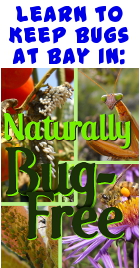 This post is part of our Organic Orcharding lunchtime series.
Read all of the entries: This post is part of our Organic Orcharding lunchtime series.
Read all of the entries: |
It's been a tough week for
the White
Leghorn hen.
Today she came out of the
coop scratching around like her old self.
When I saw her up and about
the first thing I thought she could use is some warm scrambled eggs and
Anna agreed. With any luck she'll be able to re-join the flock in a few
more days.
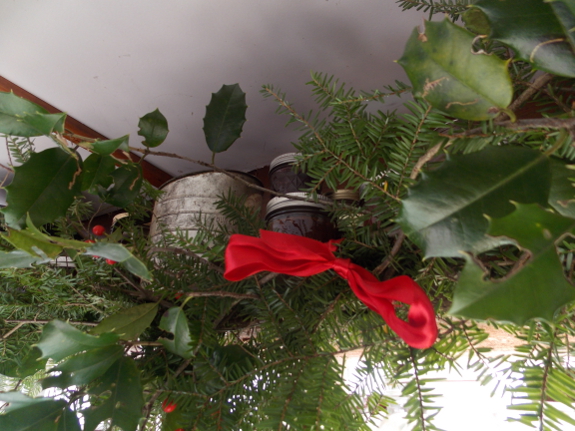
I used to love Christmas
trees, but somewhere during the move to the farm, I lost the impulse to
put one up. Mostly, it's just a matter of not having space inside
for a big decoration, but Sarah's recent post reminded me that ornamentation doesn't have to take up much (or any) room.
"Do we have any
Christmas-tree lights in the barn?" I asked Mark. Upon hearing
that we didn't, I instead headed out into the woods with some clippers
in search of pine boughs. The pine branches were all too high to
reach, but young holly and hemlock trees were pushing up toward the
canopy as part of the forest's middle age. A bit of green
embroidery thread and a red ribbon I'd tucked away in that embroidery
bag turned the greenery into a garland around the base of our jam shelf.
I was surprised at how
much the bit of greenery brightened my day. I'll bet that's why we
started bringing in Christmas trees in the first place. What's your favorite space-saving, low-cost holiday ornamentation?
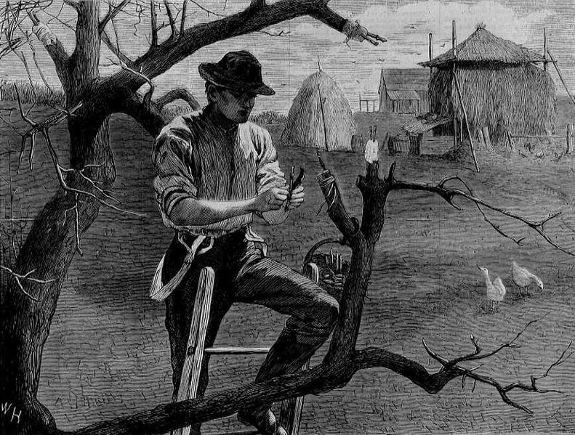
I'll end this week's lunchtime series with a couple of scattered tidbits from Organic Orcharding that caught my interest but which I couldn't seem to fit into a coherent post:
- Logsdon lists several "unusual" fruits (which are now relatively usual, like persimmons, mulberries, and figs). But he gives a very good warning: Before planting unusual fruits, take a few minutes to find out why they're unusual. For many of us, the old standbys might make more sense.
- When growing experimental seedlings, Logsdon recommends letting
each seedling grow for one year, then heading it back to eighteen
inches. This prompts the tree to fork. Let one fork grow
normally to test the seedling rootstock, but graft a known variety onto
the other fork. That way, if the seedling isn't worth eating, you
can just lop off that half of the tree and enjoy the good fruits from
the other half. (This is an especially handy tip if you're playing along with my apple-seedling experiment.)
I hope that's enough to
prompt you to hunt down a copy of the book and give it a read.
Maybe it's even in your local library?
(And, as one final side
note, the image at the top of this post is a wood engraving based on a
drawing by Winslow Homer, titled "Spring Farm Work -- Grafting" and
published in Harper's Weekly, April 30, 1870.)
| This post is part of our Organic Orcharding lunchtime series.
Read all of the entries: |
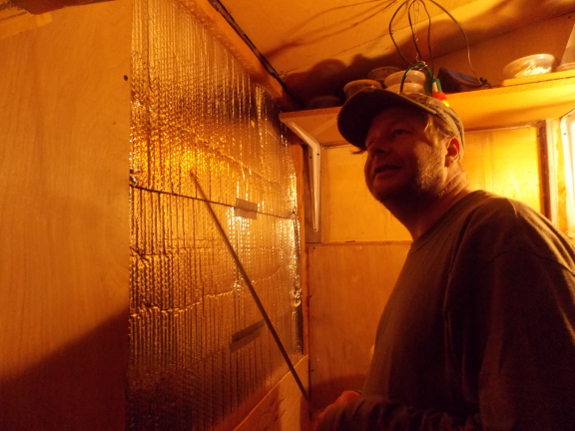
When we built the East Wing, we made the entire south wall out of old windows reclaimed from an abandoned school.
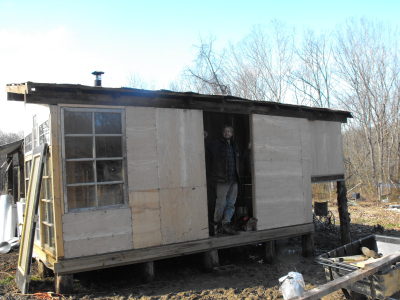 Unlike
the double-glazed windows in the trailer, the single-glazed windows in
the East Wing make winters frigid. And in the summer, the interior
bakes.
Unlike
the double-glazed windows in the trailer, the single-glazed windows in
the East Wing make winters frigid. And in the summer, the interior
bakes.
The right thing to do is
probably to take out the windows and rebuild the wall, but I decided to
just add extra insulation and cover them up.
If we ever need glass, we'll know where to find it.
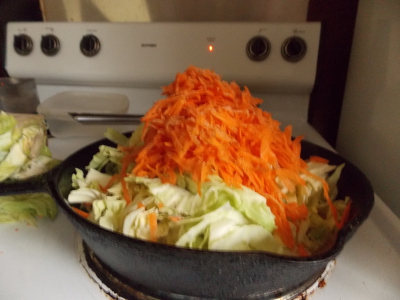 Thanks to your great recipe suggestions, we've used up two heads of cabbage this week! I cooked up the first head in this recipe emailed to me by a friend:
Thanks to your great recipe suggestions, we've used up two heads of cabbage this week! I cooked up the first head in this recipe emailed to me by a friend:
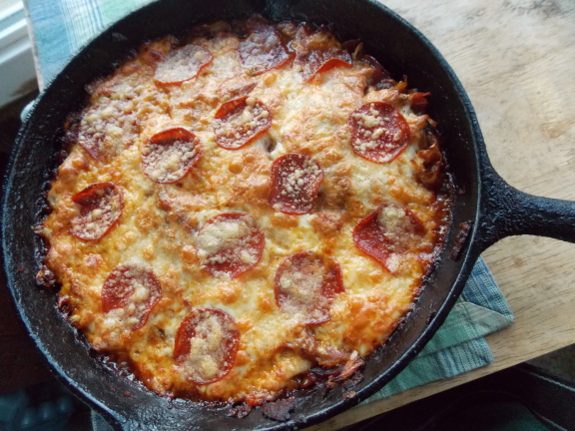
I liked Jennifer's recipe a lot, but even with the bacon, it just barely made the cut for Mark, so I moved on to the Cabbage Pizza Skillet
that another reader recommended. (Bonus that this one is a full
meal rather than just a side dish!) Cabbage Pizza Skillet will
definitely merit multiple repeats since Mark and I are always looking
for grain-free dishes that push those pizza buttons. I'd say this
one might be a little closer to lasagna than to pizza, but it tastes
great! Expect it to feed four hungry people.
With just one head of
cabbage left, we'll have to make some hard choices between the other
excellent suggestions. I'm leaning toward Erin's baked cabbage recipe, although we don't keep aluminum foil in the house. I wonder if it would work inside the Dutch oven....

I had a flat tire yesterday
coming back from Kingsport.
Something was stuck and I
couldn't pry the wheel free no matter how much I banged with the lug
wrench. Luckily I was sort of within walking distance. Even luckier was
the Deputy that dropped Anna's jury
duty notice off recently saw me walking and stopped to give me a
ride home.
Today Anna and I went back
and were able to push the wheel off with some help from the spud bar.

We've been eating a lot of venison lately, and this is one of my favorite recipes. For the stew:
- 1 pound of venison stew meat, cut into chunks
- a little bit of vegetable oil
- 2 large onions
- 1 quart of homemade chicken stock
- 1 quart of water
- 2 bay leaves
- a few sprigs of fresh thyme
- 3 large carrots
- 1 pint of frozen green beans
- salt and pepper to taste
Saute the chunks of stew
meat in oil until the outsides are brown. In the meantime, cut up
the onions and add them to the meat, cooking until tender. Then
add the chicken stock and water, bay leaves, and thyme (with the last in
a tea ball so it's easy to fish the stems out later) and simmer for at
least two hours, until the meat is very soft. Next, cut the
carrots into bite-size pieces and add them to the stew, simmering for
about half an hour longer until they're soft but not mushy. Add
the green beans then salt and pepper to taste.
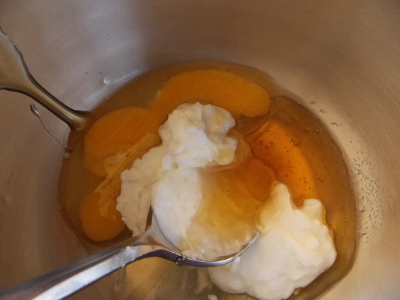 As
a special treat, you can add dumplings, which I adore but don't make
often since we're mostly off grains. I do this by eye, but amounts
are roughly:
As
a special treat, you can add dumplings, which I adore but don't make
often since we're mostly off grains. I do this by eye, but amounts
are roughly:
- 1 egg
- about the same amount of yogurt as egg
- about half as much honey as yogurt
- a sprinkling of salt
- about half a teaspoon of baking powder
- enough flour to make a biscuit-dough consistency
Mix it all together, then plop four spoonfuls onto the top of your stew at the green-bean stage. Your soup must
be at a gentle simmer for this to work. Put on the lid and let
cook for about ten minutes, then flip the dumplings (which will have
expanded drastically) over, replace the cover, and cook for another ten
minutes. You can also add herbs to the dumplings, but they seem to
soak up enough of the broth to be quite flavorful as-is.
With the dumplings, this
serves four hungry people. Without the dumplings, it would serve
four less-hungry people, or three hungry people. Enjoy!
When is the creek too high
for an ATV crossing?
I'm not sure, but on Friday
the water height was getting close to the level of the dip stick, which
has a little rubber plug to prevent water from going in but I
speculated that it was better not to risk it.
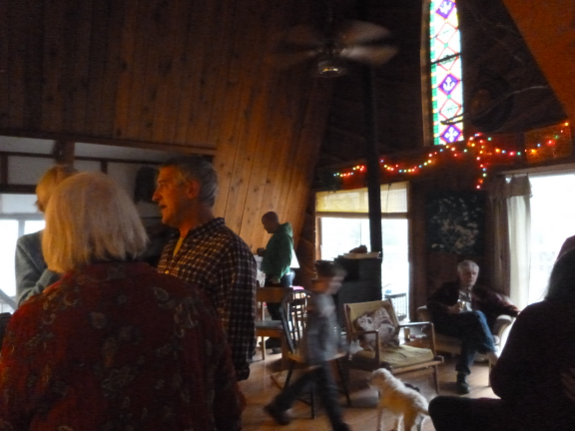
How do you get an
introverted hermit to go to a party? Hold it less than a mile away
in the afternoon so she can get home in time to check on the chickens.
Kidding aside, this was
our neighbor's best solstice/Christmas celebration yet. It was
great to see everyone (although we did miss a few familiar faces).
(Plus, this post counts as documentary proof that I left the farm this month. See, Mom, I'm not really a shut-in!)
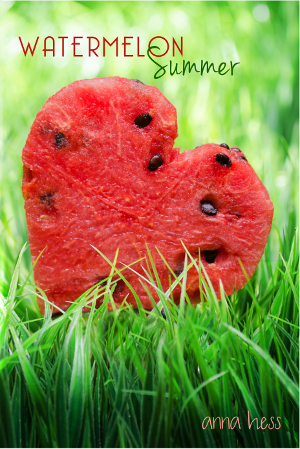 Thanks to all of your encouragement
(and to your bearing with my whining and complaining), my first work of
fiction is now up on Amazon! As you can tell from previous posts
on this topic, I'm not as confident in my abilities in this new genre,
so your kind reviews will definitely boost my mood considerably.
Thanks to all of your encouragement
(and to your bearing with my whining and complaining), my first work of
fiction is now up on Amazon! As you can tell from previous posts
on this topic, I'm not as confident in my abilities in this new genre,
so your kind reviews will definitely boost my mood considerably.
Watermelon Summer is a young-adult tale about an intentional
community that failed and a girl who refused to give up the dream. The
book is now available on Amazon for $2.99, and if you don't mind
waiting, you can use that link on Friday to pick up a free copy.
And for those of you who
are currently being scared off by the "young adult" part of the
description, take heart. 55% of young-adult books are read by
people over 18, and the
biggest demographic is actually among people 30 to 44 years of
age.
Chances are you'll fit right in. (Young adult is actually my very
favorite fiction genre due to its usual lack of muddiness and
willingness to tackle controversial issues.)
The rest of this week's lunchtime series consists of excerpts from the first couple of chapters of Watermelon Summer.
And to tempt you to stop back by even if you're not interested in
fiction, I'll be incorporating images from my past that made their way
into Watermelon Summer into the posts. Enjoy!
| This post is part of our Watermelon Summer lunchtime series.
Read all of the entries: |
I found out today where Lucy
has been spending her time these past few days.
Guarding her deer
trophy/dinner.
She's quite proud of herself,
and I think if she could talk she'd try to get me to help her bury most
of it so it can age like a fine wine.
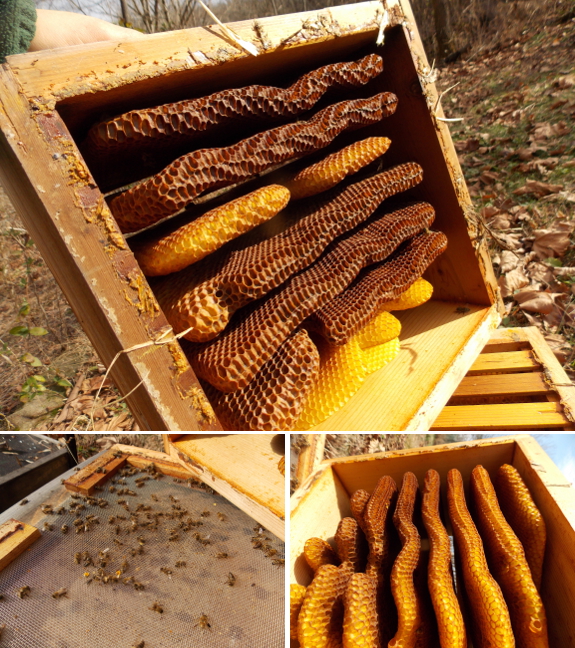
To recap, we went into
winter with three hives. Our oldest hive is full of bees shipped
to us from Texas in spring 2012 who swarmed in spring 2013. Our second-oldest hive consists of a package we bought more locally this past spring, who were dusted with sugar to treat varroa mites this fall. And our youngest hive was a very long shot --- a swarm captured near the barn in late June.
If I had to guess in October when I started winterizing,
I would have said the barn swarm had a low chance of making it through
the winter, this year's package had a good chance, and the Texas bees
had a very good chance. Nature has already proven me wrong.
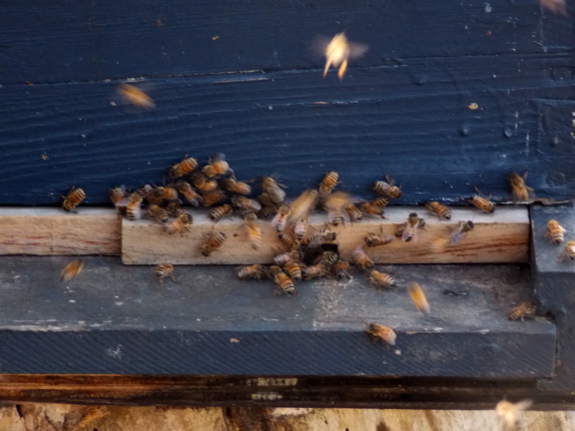
In early December, we
enjoyed one warm, sunny day, and I saw quite a few bees going in and out
of the barn-swarm hive. While I would have liked to believe these
bees were happy residents, I had a sinking suspicion that colony had
perished and a stronger hive was stealing their honey. I figured
if that was the case, there was nothing I could do about it, though, so I
left them alone.
But you know me --- I
like to know where I'm at. So this week I set out to see what I
could tell about our hives without opening them up. I started with
the oldest hive, who I'm most confident about, stuck my ear up against
the box...and heard nothing. Could they really be dead?
Clunk! The camera
around my neck knocked into the side of the hive box, and suddenly the
bees inside began buzzing angrily. Two happy lessons learned at
once --- if you don't hear bees in a winter hive, give the box a little
knock; and, this hive is alive!
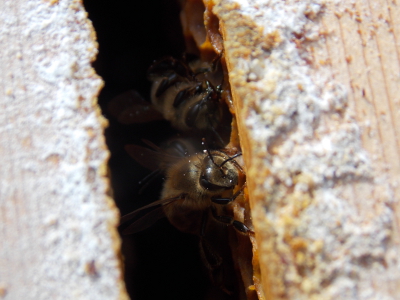
The next stop was the
second-oldest hive, which I had a lot of faith in too. Here,
though, my faith didn't seem to be grounded in reality. Even after
knocking on the wood, no buzzing was forthcoming, so I opened up the
hive and found it dead. (Photos at the top of this post and to the
right.)
I'm a bit bamboozled
about what happened to this hive since it had a healthy population
(despite slightly higher than recommended varroa levels) going into the
winter. Now, there are only about 150 bees in the hive, a few
reaching into comb as if they'd run out of food, but most on the
bottom-board and entrance. If the hive wasn't also completely empty of honey, I'd say the culprit was colony collapse disorder.
But maybe the colony collapsed long enough ago that whatever usually
keeps other bees out of these hives dissipated, and the hive was robbed
out?
Without much hope, I
headed up to the barn-swarm hive, knocked on wood, and heard
buzzing! Despite very low numbers going into winter, this plucky
little colony has survived many nights in the teens. Maybe what I
saw two weeks ago was this hive's workers stealing all the honey from
the dead hive so the barn-swarm hive could make it through?
All of this musing aside,
I think I've decided not to go with straight-Warre-style management
next year, and instead to split the strongest hive. I've got two
boxes of Warre comb all drawn out, and that hive seems to have resilient
genetics, so it's probably a good idea to turn one into two.
That won't happen until
midspring, though. For now, I'll just hope the two remaining hives
last through the rest of the winter...knock on wood.

If I'd known I was going to fall in love that day
for the first time in my life, I would have taken the attendant
trials and tribulations in stride. But I didn't know, so I spent far
too many minutes considering whether my parents would buy me a
ticket back home to Seattle if I called up and begged. The
remainder of my stay in the West Virginia airport was devoted to figuring
out how to get to Kentucky, which meant trying to break through the
Appalachian language barrier.
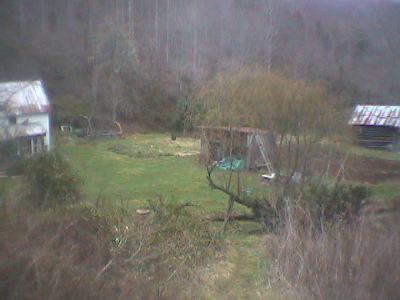 You'd think that, since I mastered Spanish in
high school and picked up a smattering of French from Canadian
visitors, I would have had travel within the U.S. covered. You
also would have been wrong. Stopping by the information desk
at the airport felt like a Peanuts cartoon—you know, one
of those scenes where the teacher is talking and all you hear is "wa
wa wa, wa wa, wa wa." The ancient attendant's excessive
head-shaking seemed ominous, though, so I decided to try my luck
elsewhere.
You'd think that, since I mastered Spanish in
high school and picked up a smattering of French from Canadian
visitors, I would have had travel within the U.S. covered. You
also would have been wrong. Stopping by the information desk
at the airport felt like a Peanuts cartoon—you know, one
of those scenes where the teacher is talking and all you hear is "wa
wa wa, wa wa, wa wa." The ancient attendant's excessive
head-shaking seemed ominous, though, so I decided to try my luck
elsewhere.
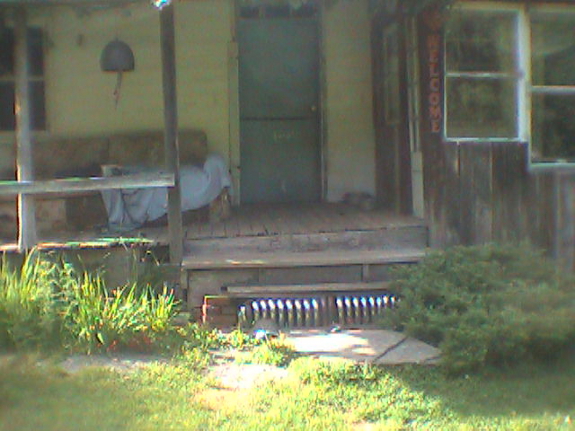
I didn't remember my new smartphone (and the
airport's free wireless) until the nice lady at McDonald's laughed at
me for suggesting bus or train service to the Pikeville area.
She, at least, seemed to speak English, albeit with a mountain
twang—perhaps the problem at the information desk had merely been the
old guy's lack of teeth?—and she 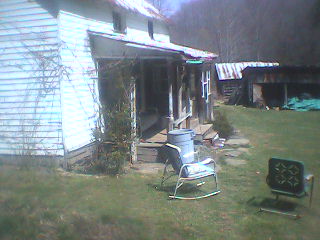 was quite ready to give me
driving directions to Kentucky. Until, that is, I mentioned my
lack of wheels. Then the lady started to look concerned and to
call me "sugar," so I made up some excuse about having family who
could come and pick me up after all, then retreated to a waiting
area to figure out Plan B.
was quite ready to give me
driving directions to Kentucky. Until, that is, I mentioned my
lack of wheels. Then the lady started to look concerned and to
call me "sugar," so I made up some excuse about having family who
could come and pick me up after all, then retreated to a waiting
area to figure out Plan B.
Now, before you take my parents to task for
stranding me in no-bus-service West Virginia, let me speak in their
defense. Actually, I probably should back up about a week and
explain what a suburban girl like me was doing stranded in an
Appalachian airport....
I
hope you enjoyed this first installment of Forsythia's adventure.
Stay tuned for another chunk of her story tomorrow, or download the entire ebook of Watermelon Summer here.
| This post is part of our Watermelon Summer lunchtime series.
Read all of the entries: |
What's an easy way to block
100% of incoming light and still have the option to turn the "light" on
when you want a little sunshine?
I cut a 2x4 and installed a
handle for easy removal and closing.
Why not use curtains? The
ones I tried let a good amount of light shine through.

 Mom
sent me a fun birthday package full of odds and ends of crafting
supplies. The pieces that spoke to me immediately were two chunks
of fleece fabric cut into the shape of a hat. I figured, why not
sew them together and have headgear for hunting season?
Mom
sent me a fun birthday package full of odds and ends of crafting
supplies. The pieces that spoke to me immediately were two chunks
of fleece fabric cut into the shape of a hat. I figured, why not
sew them together and have headgear for hunting season?
Of course, I couldn't
help getting a bit fancy, which turned out to be my downfall.
After sewing the two pieces of fleece together, I cut a bit off another
piece of fabric Mom had given me (from somewhere far away --- want to
remind me where this came from, Mom?). The idea was to attach it
to the bottom and inside of the fleece so I could fold the bottom of the
hat up to have a different-colored brim.

What I didn't take into
account is that the other fabric lacked the fleece's stretch, and that
the fold took away some critical millimeters of head space. So my
final hat was too tight to beat out my old standby, shown on the left
and bought by my mother-in-law at a goodwill about five years ago for
fifty cents. I guess I'll have to give the don't-shoot-me hat to
someone a bit less big-headed than me.
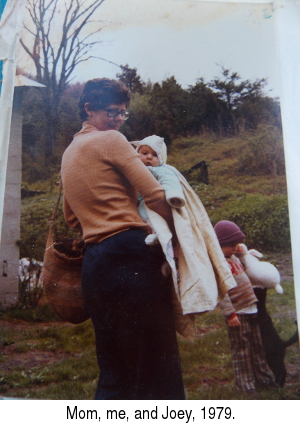 It all started before I was born, when my
mother hopped in a VW bus with some friends and drove south from her
Massachusetts home to join a commune.
It all started before I was born, when my
mother hopped in a VW bus with some friends and drove south from her
Massachusetts home to join a commune.
"It wasn't a commune," Mom said, correcting my
wording just like every other time I'd ask her about Greensun.
"And I wasn't a hippie."
"Sure you weren't, Mom," I'd either say or think,
depending on how nice I was feeling at the moment.
"It was an intentional community," Mom reiterated
a week before I ended up stranded in West Virginia. The flier
that had restarted this conversation hit the trash can as Mom
continued her historical whitewashing. "You can call it a
community land trust if you want, but not a commune."
I wasn't buying it, but I knew what Mom was
trying to say with her adamant denial of hippiedom—she hadn't
smoked pot (supposedly) and I'd darn well better not either.
That message was coming through loud and clear, so I decided to
humor my mother on the semantics issue. "Sure,
Mom. You spent a solid year living in an intentional
community. Got it."
I'd been begging to visit the Greensun community
since I could pronounce words of four syllables, but Mom never saw
any reason to fly across the country to grant my wish. Never
mind that my biological father still lived there (I thought) and
that I've never met him.
(Oh, yeah—I'm a love child. Still not a
hippie, Mom?)
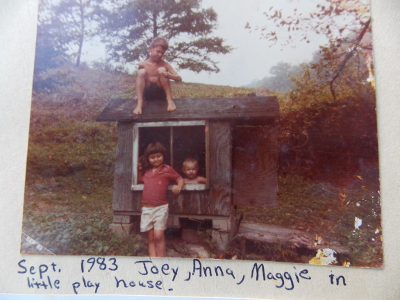 "You think you want to go there now, but you
really don't," Mom replied. (I decided to let it slide that my
mother seemed to think she knew my wishes better than I did, so I
stayed silent.) "When I left, there were plastic doll heads on
all the fence posts. Your father said they scared away
deer, but they mostly just scared away people. Very
creepy."
"You think you want to go there now, but you
really don't," Mom replied. (I decided to let it slide that my
mother seemed to think she knew my wishes better than I did, so I
stayed silent.) "When I left, there were plastic doll heads on
all the fence posts. Your father said they scared away
deer, but they mostly just scared away people. Very
creepy."
"So, I'll wear my doll-fighting gear," I
said. "No problem. I'll even bring a wooden stake if
it'll make you feel better."
Mom smiled despite herself. "Forsythia—" (Naming your child after a flower—another sign of
being a hippie. Just saying.) "—Do you really want to
spend your Europe money visiting an abandoned commune?"
At this point, I couldn't hold my tongue any
longer, so I crowed: "Ha! You admit it's a commune, which
means you're a hippie!"
Mom plowed right past that remark and continued
trying to talk me out of my plan. But even though I yes'ed
and no'ed appropriately, I was already at Greensun in my mind.
I
hope you enjoyed this second installment of Forsythia's adventure. Stay
tuned for another chunk of her story tomorrow, or download the entire
ebook of Watermelon Summer here.
| This post is part of our Watermelon Summer lunchtime series.
Read all of the entries: |
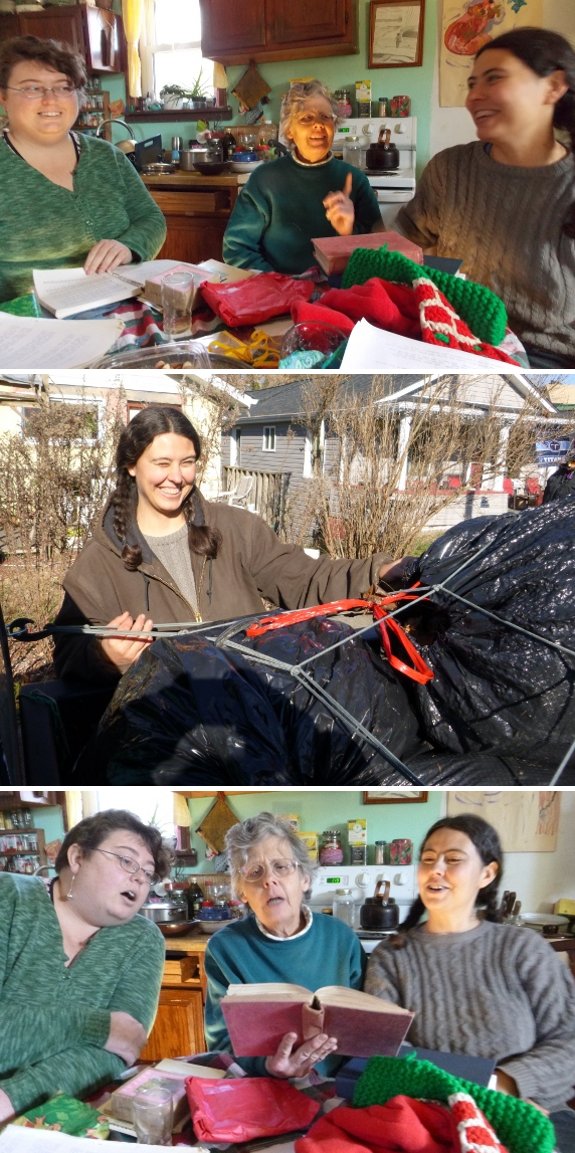

Poor Mark has had to bear
with four permutations of this cake, but I think I've finally got the
details ironed out. It's delightfully simple, richly chocolate,
and makes its own frosting all in the same pan.
First, preheat the oven
to 350 degrees and pull out a glass, 9x13-inch cake pan (or two 8x8-inch
square or two 9-inch round cake pans). Now prepare the frosting:
- 1 cup of dark chocolate chips
- 0.5 cups of heavy cream
- 1 cup of jam. (Blackberry or raspberry stands up to the chocolate best, but it wasn't bad with blueberry, and I might try strawberry next. Homemade, low-sugar jams keep this from turning sickly sweet.)
Melt the chocolate chips
in the microwave, being careful not to burn them. (If you start
with cold chocolate chips, it might take two minutes, but start with one
minute since that will usually melt room-temperature chips.)
Next, stir in the cream and jam. Spread the frosting mixture in
the bottom of your pan. (No grease is necessary in glass, but I'm
not sure about metal.)
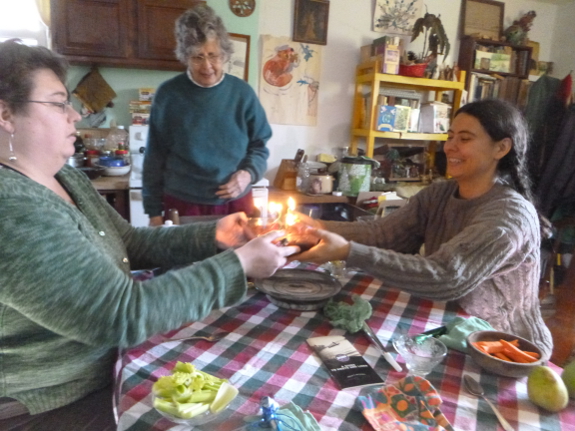
Now, make the cake:
- 5.5 tablespoons butter
- 0.75 cups brown sugar
- 2 eggs
- 0.5 cups yogurt
- 0.5 teaspoons vanilla
- 1 cup all-purpose flour
- 0.5 teaspoons baking soda
- 0.5 teaspoons baking powder
- 0.25 teaspoons salt
- 0.5 cups plus 1 tablespoon cocoa (or just a heaping half cup)
- 0.5 cups boiling water
Melt the butter, then mix
in the brown sugar, eggs, yogurt, and vanilla. Add the flour,
baking soda, baking powder, salt, and cocoa (mixing the dry ingredients
first if you want, but I'm usually lazy and just add them straight to
the wet ingredients, making sure to disperse the teaspoons of leavening
and salt evenly across the batter surface). Mix in the boiling
water and pour the batter on top of the frosting in the pan.
Bake until a knife comes
out clean from the cake layer. I haven't actually tried to flip
the cake out, and instead generally just scoop individual slices out of
the pan and serve them jam-side-up, but it might work to decant the cake
for party presentation. Be sure to serve warm so the frosting is
flowable. This recipe serves 8 chocoholics or 16 people with
self-restraint.
 A summer spent among aging hippies might not
sound like fun to most going-on-eighteen-year-olds, but the truth is
that this felt like a do-or-die situation. Greensun had sent
out a call to all of its past members (thus the flier) asking for a
commitment of time and money if we wanted the community to
continue. And as much as I had to agree with Mom that sleeping
in an old farmhouse with holes in the wall large enough to see
through wasn't so appealing, the alternative was that if the community
shut down, I'd never
know what I was missing.
A summer spent among aging hippies might not
sound like fun to most going-on-eighteen-year-olds, but the truth is
that this felt like a do-or-die situation. Greensun had sent
out a call to all of its past members (thus the flier) asking for a
commitment of time and money if we wanted the community to
continue. And as much as I had to agree with Mom that sleeping
in an old farmhouse with holes in the wall large enough to see
through wasn't so appealing, the alternative was that if the community
shut down, I'd never
know what I was missing.
And I might never meet my bio-dad.
Which is all a long way of explaining how I ended
up in southern West Virginia, which apparently had the closest
airport to Pikeville, Kentucky, which was relatively close to
Greensun. (You know you're going to the boondocks when
specifying locations involves lots of "It's near"s rather than an
actual town's name.) Mom had given me the phone number of a
neighbor who could come pick me up, and she'd even offered
to book a room at a nearby hotel so that one of the previous
Greensun inhabitants could drive me down when he or she arrived.
But
I wanted to get there early to see the place all by myself, and
I 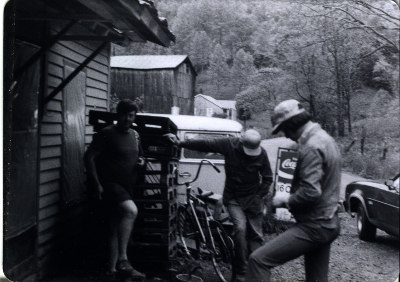 also wanted to travel on my own. After all, if my
trip had turned out to be a tour of Europe instead of Appalachia,
I'd have been figuring out transportation as I went along, and I
didn't want to miss out on that experience.
also wanted to travel on my own. After all, if my
trip had turned out to be a tour of Europe instead of Appalachia,
I'd have been figuring out transportation as I went along, and I
didn't want to miss out on that experience.
On the other hand, now that I was in West
Virginia (aka the land of no public transportation), I was starting
to suspect that I really couldn't get there from here. While
researching options for where to go on my post-high-school and
pre-college trip, I'd initially chosen Europe (before throwing that
voyage away for what was currently seeming like a very bad idea)
since its extensive rail system made it easy to get around for
those of us too young to rent a car. Why couldn't Greensun be
located on an Amtrak line?
I
hope you enjoyed this third installment of Forsythia's adventure. Stay
tuned for another chunk of her story tomorrow, or download the entire
ebook of Watermelon Summer here.
| This post is part of our Watermelon Summer lunchtime series.
Read all of the entries: |
It was cold this morning..but
not frozen enough to drive the truck on the driveway.
The ATV was backfiring on
cold mornings when I put it in reverse, but today I think I let it warm
up enough to prevent those unpleasant explosions.
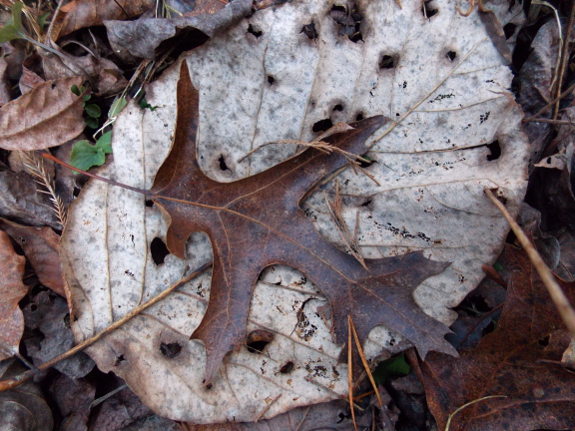
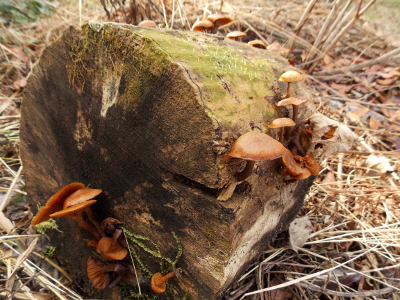 I
figure we lose about 10% of our firewood post-cutting and
pre-burning. The scenario generally goes like this --- a tree
falls across the driveway (or I need a tree out of the way for gardening
purposes) and it absolutely has to get cut today. I beg Mark to
come cut it for me, and he kindly breaks it down into
stove-lengths. We stack the wood, or leave it where it lies,
planning to come back with a motorized vehicle to haul it home as soon
as driveway conditions permit...then something happens and we forget
about it. Six months later, the firewood is so punky from sitting
on the ground that it's not burnable.
I
figure we lose about 10% of our firewood post-cutting and
pre-burning. The scenario generally goes like this --- a tree
falls across the driveway (or I need a tree out of the way for gardening
purposes) and it absolutely has to get cut today. I beg Mark to
come cut it for me, and he kindly breaks it down into
stove-lengths. We stack the wood, or leave it where it lies,
planning to come back with a motorized vehicle to haul it home as soon
as driveway conditions permit...then something happens and we forget
about it. Six months later, the firewood is so punky from sitting
on the ground that it's not burnable.
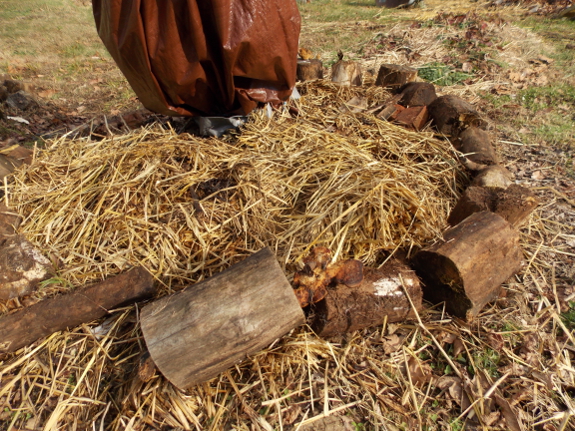
The wood is, however, still perfect for use in the garden. This week, I took the yellow wagon
down to the bend in the driveway to collect one of these caches of lost
and found firewood, then tugged the cart home to perk up the figs and
dwarf apples. Two and a half trips later, I could almost feel the
garden letting out a contented sigh. Too bad most of these piles
of punky wood aren't close enough for wagon-work!
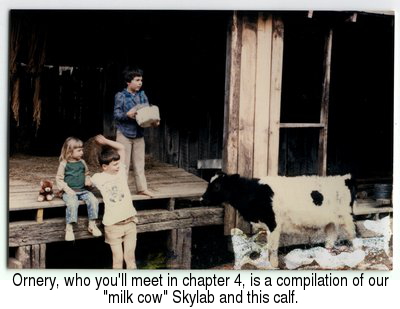 The smartphone Mom had given me (along with
strict instructions to call her as soon as I got to Greensun)
provided the depressing information that there really were no
trains, buses, or even taxis running between Huntington and
Pikeville. I was seriously considering throwing away my pride
and calling Mom's old neighbor when a voice disturbed my brown
study.
The smartphone Mom had given me (along with
strict instructions to call her as soon as I got to Greensun)
provided the depressing information that there really were no
trains, buses, or even taxis running between Huntington and
Pikeville. I was seriously considering throwing away my pride
and calling Mom's old neighbor when a voice disturbed my brown
study.
"Excuse me." The words came from a guy
about my age, who didn't seem to understand that
person-you-don't-know-frantically-pushing-buttons-on-a-phone is
American for "Do not disturb." The interrupter of my solitary
frustration was easy on the eyes, and if he'd been the kid next
door, I probably would have been thrilled to be spoken to. But
since I was in an airport all by myself, I couldn't help thinking
that the guy was probably a rapist or a serial killer. So I
merely frowned at him and went back to my agitated button-pushing.
But the stranger was undeterred by my lack of eye
contact. "I couldn't help overhearing that you're having
trouble getting to Kentucky, and I think I have a solution," he told
me.
"Hmmm?" I replied noncommittally, unwilling to be
totally rude by ignoring him but hoping my tone would send him away.
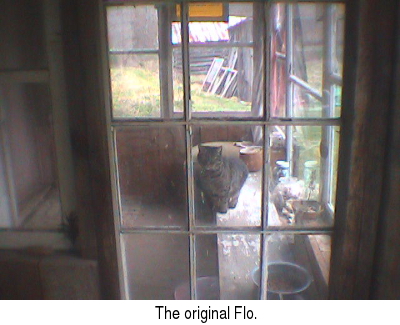 "I'm Jacob," the stranger said, thrusting out a hand, which
I reflexively shook. "And you're in luck because I'm the sole
owner and driver of the Mountaintop Taxi Company. I just came
up here from Pikeville to drop someone off, and I'll give you a 50%
discount so I don't have to ride back empty."
"I'm Jacob," the stranger said, thrusting out a hand, which
I reflexively shook. "And you're in luck because I'm the sole
owner and driver of the Mountaintop Taxi Company. I just came
up here from Pikeville to drop someone off, and I'll give you a 50%
discount so I don't have to ride back empty."
(I know what you're thinking. I start off
by telling you this is the day I fall in love, and now here's a cute
guy standing in front of me. Not only is he no serial killer,
he's also the love of my life, so I should definitely accept the
ride. Come on. Could you be a bit less conventional and
pay more attention to the dangers of my situation? And, for
the record, I didn't fall in love with Jacob...at least not that
day.)
On the other hand, dangers aside, my options
appeared to be severely limited. "Hmmm," I repeated, trying to
decide whether accepting a ride from this guy was as bad as
hitchhiking, and whether I could walk ninety-odd miles before my
shoes wore out.
"Okay, I know it probably seems a bit dicey to
accept a ride from a stranger," Jacob said, unfazed by my
monosyllabic replies. "But if it'll make you feel better, I
have character references. Wanna call my mamaw?"
"Your what?" I was startled enough to
reply. And before I could glue my eyes back onto my
smartphone screen and make another go-away hum, the stranger had
speed-dialed his mamaw (which seemed to be a sort of grandmother) and put her on speaker phone.
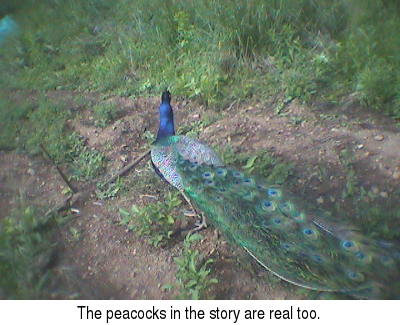 "Jacob?" a female voice answered. "Did you
get your uncle to the airport on time? Will you be home in
time for supper?"
"Jacob?" a female voice answered. "Did you
get your uncle to the airport on time? Will you be home in
time for supper?"
Now it was Jacob's turn to look a bit chagrined,
which actually made me feel a lot better. If he still lived at
home, he probably was as young as he looked, and no one my age could
be a serial killer, right? "Um, Mamaw, I'm still up in
Huntington, so I'll probably be late...."
"Well, could you pick up some milk on your way
home? Your brother drank it all, and we need some for
breakfast. And maybe some bananas and eggs?"
Wow. I didn't know it was possible for
someone's face to turn that shade of red without his air passage
being restricted enough to make him pass out. "Mamaw," Jacob
tried to interrupt her as the grocery list continued.
"Grandmother! Yes, I'll stop by the store, but there's a girl here who
wants a ride down to Pikeville, and she needs to know I run a real
taxi service."
"Well, now, I don't know if I'd call it a real taxi service," his grandmother
replied. It occurred to me at this point that her accent
was thicker than Jacob's and the McDonald's lady's but that I was
understanding her just fine. Progress, right? "After
all, that's my minivan you're driving and I pay for your
insurance. But you did buy the magnetic sign yourself, so that
makes it a bit official, I guess.... Be sure to invite her to
supper if she's from out of town!"
"Never mind, Mamaw. I've gotta go," Jacob
replied, ending the call and turning away. Having endured more
than my share of parental embarrassments, I figured he was going to
flee and pretend he'd never made his offer. But somewhere in
the midst of the conversation just past, I'd made up my mind and
decided Jacob wasn't an ax murderer.
"Wait!" I called, gathering up my bags.
"I'll take you up on that ride, with just one caveat—I drive."
I
hope you enjoyed this fourth installment of Forsythia's adventure. To read the rest, you'll have to download Watermelon Summer, which is free on Amazon today. (Or email me today for a free pdf copy.)
| This post is part of our Watermelon Summer lunchtime series.
Read all of the entries: |
Our stuck duck is now free as a bird thanks to a warm spell we've had lately.
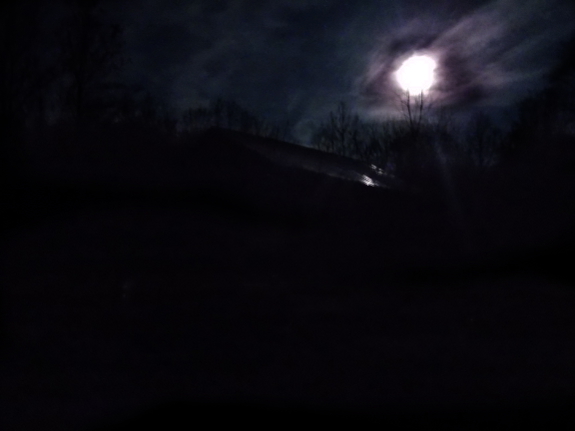
The full moon wasn't
until Tuesday, but Monday night it cast such beautiful shadows on the
barn roof, I couldn't resist heading out for a photo shoot. My
camera isn't good enough to capture the full darkness of the dark and
the lightness of the light at the same time, so I played around in the
gimp until the photograph more closely replicated what I saw. You
might have to view the photo with your freezer door open to get the full
effect, though.
We celebrated the Solstice
today by hiking part of Devil's fork trail.
Be prepared for multiple
stream crossings with water occasionally above the ankle.
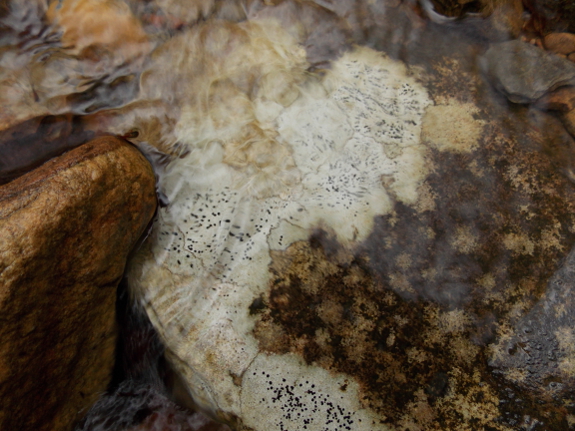
Mainstream holidays don't
tend to speak to me and Mark much, so we often skip them, but then
we're left with a celebratory void in our lives. So, for the next
year, we're going to try to come up with one meaningful (to us) holiday
per month and make up our own way to celebrate the day.
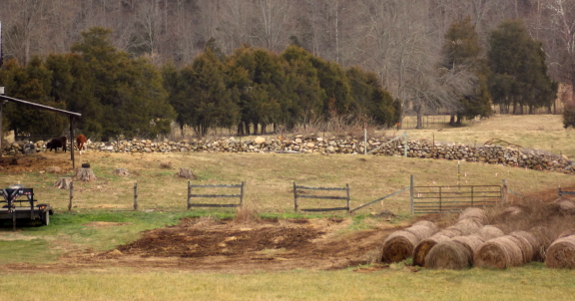
The Winter Solstice was
an obvious choice for December. After reading far too much on
Wikipedia about traditional methods of observing the holiday, we decided
to do something entirely different --- go for a hike. A majestic
bald eagle, fascinating stone walls (unusual in our area), about a dozen
creek crossings, and skinny-dipping in a deep forest pool were all included in the outing.
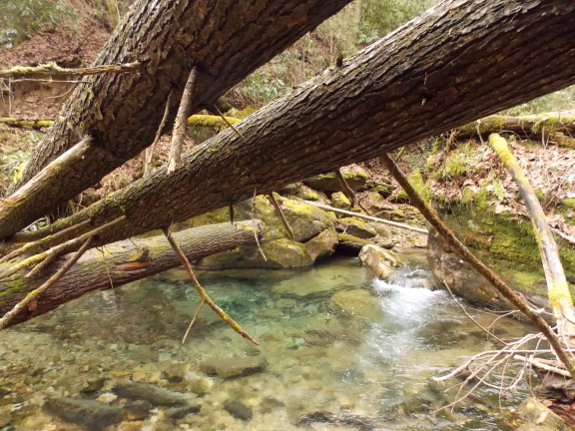
What's up for
January? The outside-the-box thinker in the family (Mark) is going
to have to make something up because nothing on the calendar called out
to me. Maybe you have suggestions? You get bonus points if
it's in the second half of the month to make it more distinct from
Mark's upcoming natal celebration.
The Stihl MS-211 chainsaw was having
some trouble getting started lately.
A tune-up seems to have
solved the problem.
We got it done by a new Stihl
dealer in St Paul at Bailey's hardware store for 25 dollars.
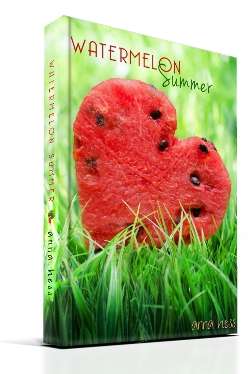 Here's what early readers have to say about Watermelon Summer:
Here's what early readers have to say about Watermelon Summer:
"The character is young, self empowering and driven; but friendly and not superhuman." --- Alan Reid
"Fun page turner." --- S.
And now for the news --- Watermelon Summer is available as a paperback!
What does this mean to you? First, you have an opportunity to win
a free copy. (Keep reading for details near the end of this
post.) And I've enrolled the book in Amazon's expanded
distribution channels, so you should be able to request that your
library pick up a copy that you can read for free and share with your
neighbors.
Meanwhile, if you hate reading on the computer and don't have an
ereader, now's also a great time to pick up your very own paperback copy
since Amazon currently has it on sale for 10% off. I've enrolled the title in Amazon's matchbook program as well, so if you buy the paperback, you'll be given the
opportunity to download a free ebook copy immediately --- perfect if you
want to read Watermelon Summer
and still give it as a gift. (I've also lowered the price of the
ebook to 99 cents this week to give folks with ereaders a bonus too.)
So, how about that free opportunity I tantalized you with in the first
paragraph? The giveaway is easy to enter --- just leave a comment
on this post by Friday, December 27, at midnight with the title of your
favorite homesteading-related work of fiction, past or present.
I'll use a random number generator to choose one commenter to win a
free, signed copy of the paperback. Thanks for reading!
(By the way, you may be asking why there are no photos of the paperback
in this post. My proof copy came in the mail last week and I liked
it so much...I immediately gave it away without thinking of taking
photos! I'll try to remember to photograph the next books that
come into my hands before they find new homes.)
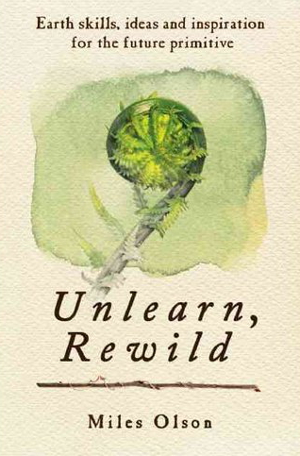 Miles Olson's Unlearn, Rewild is Thoreau-like in that the author translates philosophy into action, but Olson's book is much more readable than Walden
is. On the other hand, a modern audience will probably find Olson
more radical than Thoreau, and Olson does have a rose-tinted view of
hunter-gatherer cultures (going so far as to posit that rape was
virtually unknown in North America before European contact, which seems
like a hard fact to prove). However, even if the philosophy in the
first half of the book turns you off, I hope you'll flip to the
primitive-living skills in the second half since Olson presents each
project in such an inspiring and engaging way.
Miles Olson's Unlearn, Rewild is Thoreau-like in that the author translates philosophy into action, but Olson's book is much more readable than Walden
is. On the other hand, a modern audience will probably find Olson
more radical than Thoreau, and Olson does have a rose-tinted view of
hunter-gatherer cultures (going so far as to posit that rape was
virtually unknown in North America before European contact, which seems
like a hard fact to prove). However, even if the philosophy in the
first half of the book turns you off, I hope you'll flip to the
primitive-living skills in the second half since Olson presents each
project in such an inspiring and engaging way.
So, what is Olson's
radical philosophy? He believes we all need to "rewild" --- to
return to Stone Age technology and food-gathering methods, spending time
alone in nature to cleanse our minds and unlearn. Olson writes
that domestication is "killing the wildness." He believes that
only hunter-gatherers who depend on limited, place-based natural
resources can keep their populations small enough and their wants
ungreedy enough that they can live lightly on the earth.
Practicing what he
preaches, Olson spent years living with a group of friends in
scavenged-materials cabins on squatted land on Vancouver Island.
As I'll explain in later posts, he dumpster-dived, ate roadkill, and
harvested wild foods like dandelions. He believes that you can't
opt out of the system without breaking the rules unless you're a "lone
mountain man," and Olson clearly believes that society with other people
is one of our inherent human needs. So he recommends squatting
with friends in a marginalized environment (especially on the edges of
cities and towns).
As enticing as I find
some of the skills Olson presents, his belief system seems fundamentally
flawed. Like him, I believe that hunter-gatherer societies had a lot going for them, but the
big reason we changed over to agriculture (in my opinion) was because
our population expanded to the point where we couldn't feed ourselves as
hunter-gatherers. Unlearn, Rewild
does include a chapter on non-pharmaceutical birth control, but Olson
stops short of talking about overpopulation as the driving force of our
ecological problems. Maybe he thought that would have been too
radical?
| This post is part of our Unlearn, Rewild lunchtime series.
Read all of the entries: |
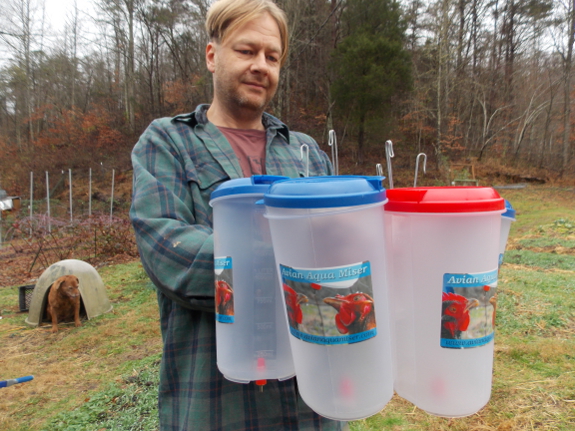
Several customers this winter
have been ordering two of our Working Chicken Combo packs at once.
I figured out today that we can fit five Avian Aqua Miser Originals in
an EZ Miser box, cutting down on shipping costs.
To pass the savings on to you, Anna created a new product on our website. The Flock of Five
is five chicken waterers for the price of three. Perfect for the
complicated homestead with a chicken tractor here, a broody hen there,
some chicks in the basement, and a coop of layers. Or maybe keep
three and give two to a friend?
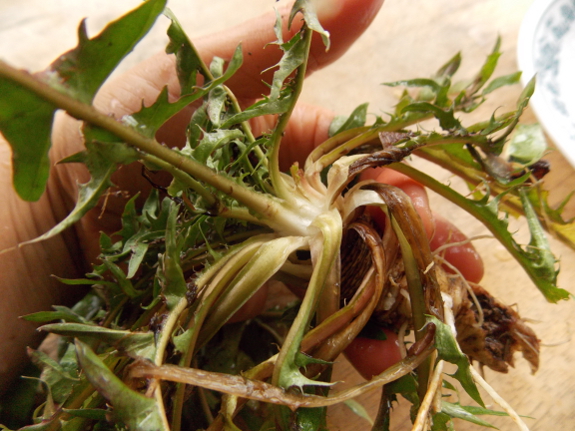
A couple of weeks ago, I downloaded a free copy of The Ultimate Dandelion Cookbook,
and it inspired me to try cooking not just the leaves, but also the
"hearts" of this often-overlooked wild food. In retrospect, I
think the author was really talking about harvesting the heart of the
dandelion in very early spring, when flowers are forming in the upper,
central part of the root, but my method of just whittling away the
woodier parts of the outer root (third photo) and roasting the center
tasted great. I'll look forward to comparing the flavor of
flower-filled dandelion hearts in a couple of months.
Here's my on-the-fly recipe for winter dandelion-heart salad
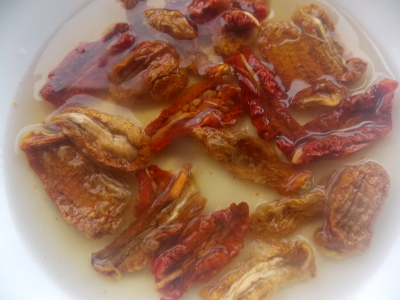 3 slices of bacon
3 slices of bacon- 1 sweet potato
- salt
- pepper
- oil
- 2 cups of dandelion greens
- hearts from those dandelion plants
- 1 clump of wild garlic (or you can use 1 Egyptian onion or 1 leek. In case you don't know, wild garlic is often found growing wild in weedy lawns in our area, and the whole plant is edible.)
- 0.5 cups of dried tomatoes, soaked for 20 minutes in hot water and
cut into chunks. (The image above shows the tomatoes soaking,
pre-cutting.)
- balsamic vinegar
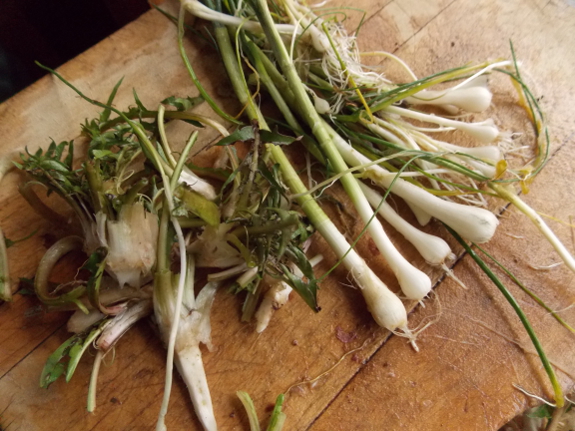
Preheat the oven to 350
and put the bacon on a tray to start baking. Meanwhile, cut the
sweet potato into bite-size wedges, toss with oil, salt, and pepper, and
lay out on another tray to bake.
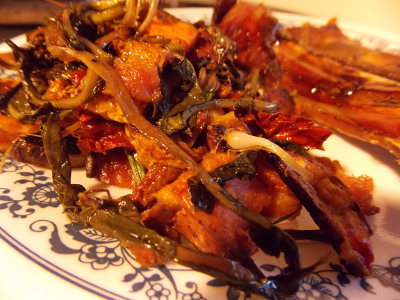 When
the bacon is slightly crisp, remove it from the heat and divide the
grease into two parts. One part stays in the pan to cover the
dandelion hearts and wild garlic, which will roast as the sweet potatoes
finish baking. The rest of the bacon grease, plus some balsamic
vinegar, greases the pan in which you saute the dandelion greens,
cooking on high until they're tender.
When
the bacon is slightly crisp, remove it from the heat and divide the
grease into two parts. One part stays in the pan to cover the
dandelion hearts and wild garlic, which will roast as the sweet potatoes
finish baking. The rest of the bacon grease, plus some balsamic
vinegar, greases the pan in which you saute the dandelion greens,
cooking on high until they're tender.
Once the sweet potatoes, wild garlic, and dandelion hearts are al dente,
remove them from the oven and add to the dandelion greens. Break
up the bacon and stir it into the pot as well, mix, and serve the salad
warm. This recipe makes a hefty side for two people, but chances
are there won't be any left over.
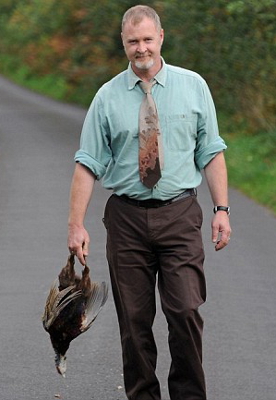 Some of my favorite parts of Unlearn, Rewild
are the chapters on meat, which present very outside-the-box
thinking. Miles Olson was once a vegan, but he experienced a
journey similar to mine and Mark's --- as he got closer to nature, he
realized it made more sense to eat meat. That's where our paths
diverged from Olson's, though, since Mark and I got into pasturing
livestock and Olson got into...figuring out when roadkill is safe to
consume.
Some of my favorite parts of Unlearn, Rewild
are the chapters on meat, which present very outside-the-box
thinking. Miles Olson was once a vegan, but he experienced a
journey similar to mine and Mark's --- as he got closer to nature, he
realized it made more sense to eat meat. That's where our paths
diverged from Olson's, though, since Mark and I got into pasturing
livestock and Olson got into...figuring out when roadkill is safe to
consume.
Ever wonder if that deer
by the side of the road is delectable meat going to waste, or is a case
of food poisoning in disguise? Olson provides these tips for when
to snag the carcass and when to leave it lying:
- If the hair pulls out easily when you tug on it, the meat is old and might not be safe.
- Clouded-over eyes are another indication of age.
- Rigor mortis is actually a sign of relatively fresh meat since the stiffness only lasts for a day or less.
- Big maggots are a sign of old meat. In addition, maggots
will pre-digest your meat, changing the flavor (but not necessarily
making it unsafe to eat).
- If it's cold outside, the meat is probably safer than if you found the deer on a scorching summer day.
- Smaller critters (like rabbits) actually keep better than big animals (like deer) because their guts are smaller and less prone to rupturing and sullying the meat.
Assuming you followed
Olson's advice and decided the deer by the side of the road was safe to
eat, what's next? Olson provided some tips we can all benefit from
about aging meat, a process that makes meat more tender. He
explains that the biggest danger in aging meat is promoting anaerobic
conditions, often found in meat in air-tight containers and in ground
meat. Excess moisture also makes meat rot instead of age.
Olson suggests a couple of different ways to age meat safely, one of
which is the traditional above-ground technique of hanging the meat in a
well-ventilated area away from flies. The other is to emulate
dogs and bury meat at least a foot deep to age the flesh slowly
underground. It's handy to know that in a survival situation, if I
killed a deer and had no refrigerator, I could bury big pieces of meat
and eat them safely weeks later.
After aging, you'd think
the next step would be cooking, but Olson actually eats most of his meat
raw to prevent the formation of carcinogens during high-temperature
cooking. Parasites can be a problem with raw meat (especially if
you're eating omnivores instead of herbivores), but Olson explains that
freezing meat for two weeks kills most parasites. Of course, you
can also cook the meat to destroy most parasites and diseases (short of
chronic wasting disease).
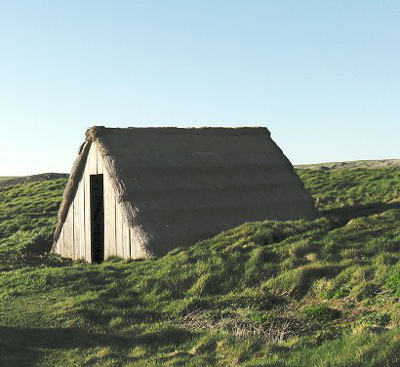 Rather
than cooking, Olson dries most of his meat. Although many
traditional cultures smoke meat as they dry it, Olson is concerned about
the carcinogenic nature of creosote, so he usually dries his meat
smoke-free. He explains that if you put meat in a well-ventilated,
stone hut in a windy place, the food can dry due to the action of wind
alone, and I wonder whether you could create your own wind by making a
black chimney rise out of a well-ventilated room (similar to the
technique some people use to make smells from composting toilets move up
and out of human range). Or you can simply dry your meat the same
way you would other foods or clothes --- in a sunny spot away from
flies, or in the warm area above your wood stove.
Rather
than cooking, Olson dries most of his meat. Although many
traditional cultures smoke meat as they dry it, Olson is concerned about
the carcinogenic nature of creosote, so he usually dries his meat
smoke-free. He explains that if you put meat in a well-ventilated,
stone hut in a windy place, the food can dry due to the action of wind
alone, and I wonder whether you could create your own wind by making a
black chimney rise out of a well-ventilated room (similar to the
technique some people use to make smells from composting toilets move up
and out of human range). Or you can simply dry your meat the same
way you would other foods or clothes --- in a sunny spot away from
flies, or in the warm area above your wood stove.
As a final note on
alternative meat-eating, Olson does suggest eating some parts of the
animal that most of us probably eschew. He says that livers,
lungs, eyeballs, blood, and the fat around the organs of herbivores are
all excellent dried. In general, high-value meats that we often
ignore include adrenal glands (high in vitamin
C), eyes (high in zinc), bones and soft, velvet antlers (mineral-rich
fat), brains, pancreas (high in vitamin K2, which prevents tooth decay),
and testicles.
Now, wasn't that a great appetizer for lunch?
| This post is part of our Unlearn, Rewild lunchtime series.
Read all of the entries: |
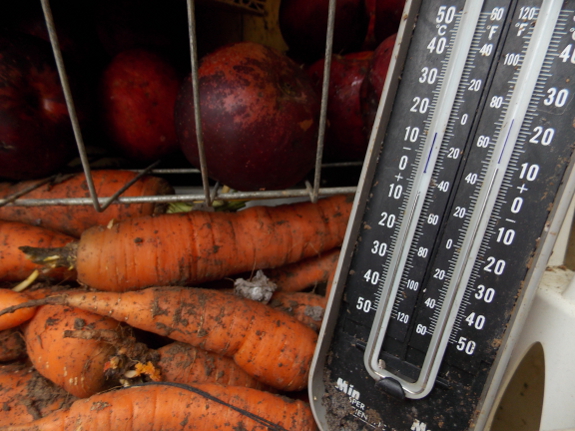
How much power has the Refrigerator
Root Cellar used so far
this year?
1.2
kill-a-watts is all it took to keep our carrots and apples from
freezing.
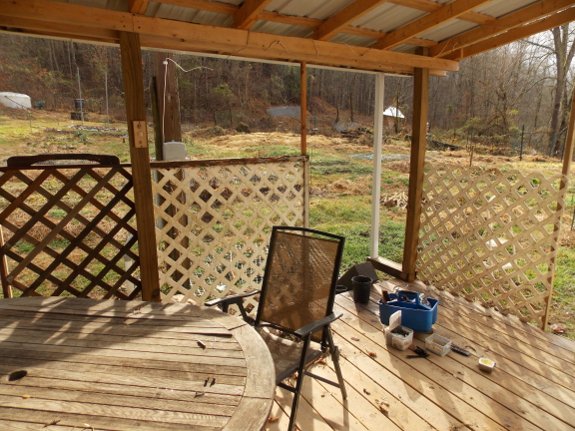
Off and on, as the spirit moves me (and weather permits), I've been working on the south side of the trailer's living shade project. It's been too cold and wet to fix the gutter,
but I snuck out on Monday and put up some trellises for a hardy kiwi
and grape that I hope will shade the porch in future summers.
I couldn't quite decide
whether to put the trellises down low, in the middle, or up high, so I
went for the easy solution (low). Depending on how much the porch
roof shades the vines, I may add some wires higher up to complete the
vine supports.
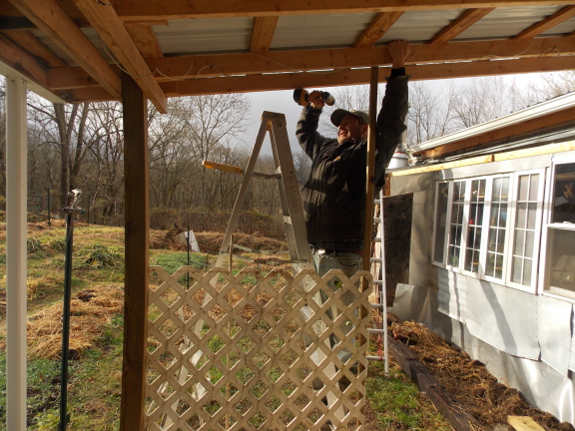
I say "I did this" and "I
did that," but the truth is that Mark helped me with the highest
attachment point. Thanks, honey! Hopefully we'll both reap
the rewards when we have a shadier porch come summer.
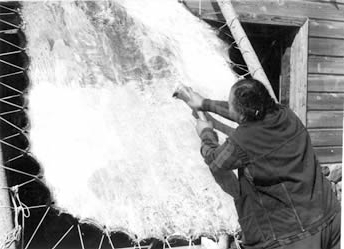 Several of you have asked in the past whether we tan the hides of the deer we kill,
and I've always replied that it sounds too hard. (Plus, what
would I use the leather for?) But Olson made the process seem
fascinating, and now I wish I still had this fall's hide to practice
on! The author explained that there are four ways of tanning
hides, and each process results in a different end product.
Several of you have asked in the past whether we tan the hides of the deer we kill,
and I've always replied that it sounds too hard. (Plus, what
would I use the leather for?) But Olson made the process seem
fascinating, and now I wish I still had this fall's hide to practice
on! The author explained that there are four ways of tanning
hides, and each process results in a different end product.Rawhide is the simplest method of tanning skin. First, you remove the flesh by scraping (a process you have to use for any type of tanning). Usually, the hair is removed as well, which involves soaking the hide in water or in a mixture of wood ashes and water, then pulling out the hair. After that, a skin earmarked for rawhide is simply laced into a frame or tacked to a board to dry. Rawhide is traditionally used to make drums, kayaks, containers, roofing, or armor.
When I first eschewed tanning, I was assuming the only method was brain-tanning, which is a very common technique used to create a breathable fabric called buckskin. You first remove the skin and hair using the methods mentioned above, then you work brains (or eggs or soap and oil) into the skin. Next, comes a softening step which involves stretching the skin in many different directions, and you end by smoking the skin to make the softening permanent.
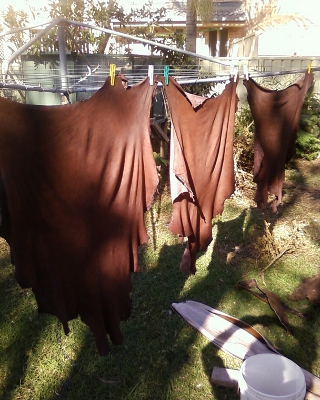 Bark-tanning
creates a water-resistant skin, and was traditionally used to make
footware, rain slickers, leather jackets, belts, harnesses, and
containers. The method is similar to brain-tanning, but you use
tannin-rich water (bark tea) rather than brains, and you soften the skin
by working in oil.
Bark-tanning
creates a water-resistant skin, and was traditionally used to make
footware, rain slickers, leather jackets, belts, harnesses, and
containers. The method is similar to brain-tanning, but you use
tannin-rich water (bark tea) rather than brains, and you soften the skin
by working in oil.The final type of skin is a fur, which simply means you leave the hair on rather than taking it off. Olson suggests that furs work best with brain-tanning methods, so you end up with a soft, supple skin on one side and the fur on the other.
If all of these methods still sound too hard, Olson presents one final option. First, create a rawhide skin, drying it completely, then cut the skin into strips and make jello! Rehydrate the strips overnight, boil the skin-and-water mixture for four hours, add flavors, and the result will set up overnight into a tasty gelatin.
Maybe I'll try one of the simplest techniques next year. Or perhaps I'll use one of Olson's trapping suggestions to procure a small hide this winter that I can experiment on. Like other chapters in Unlearn, Rewild, this one made me want to go out and follow his lead immediately.
| This post is part of our Unlearn, Rewild lunchtime series.
Read all of the entries: |
When our chainsaw
first started having trouble I thought it might be an ethanol problem.
Dumping out the questionable
fuel and adding a small amount of MotoMix helped me to quickly rule out
an issue with the fuel.
Pre-mixed
2 cycle fuel is a sure
fire way to know you don't have ethanol that's attracted water to your
tank. It's also a good idea to leave a little bit of this stuff in the
system to prevent rust that might happen over the winter storage months.
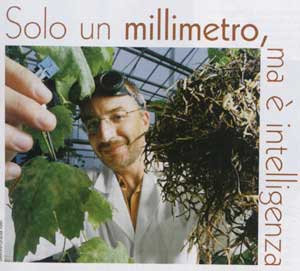 Michael Pollan has a new piece in the New Yorker
and, while it's long, I highly recommend every gardener read it.
Pollan reports on fascinating (and scientifically sound, although
controversial) studies that suggest the possibility of plant senses and
behaviors we didn't learn about in school. Some of the scientists
Pollan spoke to even use terms like "plant intelligence" and talk about
plants learning.
Michael Pollan has a new piece in the New Yorker
and, while it's long, I highly recommend every gardener read it.
Pollan reports on fascinating (and scientifically sound, although
controversial) studies that suggest the possibility of plant senses and
behaviors we didn't learn about in school. Some of the scientists
Pollan spoke to even use terms like "plant intelligence" and talk about
plants learning.
I was most interested in
possible plant senses outside the ordinary. For example, multiple
time-lapse videos show that bean plants grow directly toward a metal
trellis, seeming to know exactly where the support is located.
Pollan reported that the scientist "speculates that the plant could be
employing a form of echolocation. There is some evidence that plants
make low clicking sounds as their cells elongate; it’s possible that
they can sense the reflection of those sound waves bouncing off the
metal pole." In another study, the same scientist "found
that plant roots would seek out a buried pipe through which water was
flowing even if the exterior of the pipe was dry, which suggested that
plants somehow 'hear' the sound of flowing water."
I'd heard rumblings about
this next study, but found Pollen's interpretation fascinating there as
well. He wrote about how a scientist used radioactive carbon
isotopes in a forest to show how trees exchange nutrients using
mycorrhizal fungi. In the study, "mother trees" specifically
nourished their offspring, and were seemingly able to recognize that
familial relationship. In addition, evergreen and deciduous trees
of different species shared food at different times of the year --- "the
evergreen species will tide over the deciduous one when it has sugars
to spare, and then call in the debt later in the season."
Finally, a very
controversial study suggests that plants may be just as conscious as
certain animals. One study showed that "plants can be rendered
unconscious by the same anesthetics that put animals out." Pollan
continued, "What’s more, when plants are injured or stressed, they
produce a chemical—ethylene—that works as an anesthetic on animals. When
I learned this startling fact from Baluška in Vancouver, I asked him,
gingerly, if he meant to suggest that plants could feel pain.... 'If
plants are conscious, then, yes, they should feel pain,' [Baluška] said.
'If you don’t feel pain, you ignore danger and you don’t survive. Pain
is adaptive.' I must have shown some alarm. 'That’s a scary idea,' he
acknowledged with a shrug. 'We live in a world where we must eat other
organisms.'"
Interesting reading if
you're willing to imagine plants as different from the passive organisms
most of us consider them to be. Or check out the embedded videos
to hear directly from a couple of the scientists in question.
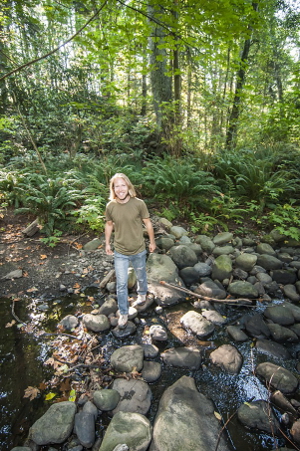 As
you can tell, I was very impressed by Miles Olson's techniques of
finding sustainable sources of meat and using every part of the
animal. I was less inspired by his plant-related advice, but did
find a few gems to pass on.
As
you can tell, I was very impressed by Miles Olson's techniques of
finding sustainable sources of meat and using every part of the
animal. I was less inspired by his plant-related advice, but did
find a few gems to pass on.
Olson advocates tending
gardens that are so enmeshed in nature that the average person can't
even tell the gardens are there. This is a bit like the food forests of the Amazon
in theme, but Olson is gardening in a more urban environment. He
advocates understanding which wild plants are edible and tending them a
bit like a garden, harvesting only 10% of the plants at any one time,
replanting roots, and knowing which plants benefit from pruning or
coppicing.
Olson creates piles of
leaves, into which he plants burdock, wild carrots, and
dandelions. The rotting leaves feed the plants, and they also make
it easy to pull out the roots, which he eats. Elsewhere, he
plants seedballs, or seeds food plants into recently-burned areas.
That said, I was left
wanting much more information about Olson's gardening strategy.
What does he grow other than dandelions? Does he have traditional
gardens too? Maybe the bigger picture will be illuminated in a
hypothetical book two.
| This post is part of our Unlearn, Rewild lunchtime series.
Read all of the entries: |
How do you know if that old
can of fuel in the barn is no longer worth using?
I had a container that was a
year old and decided to give a fuel
test kit a try.
You get 100 test swabs that
are easy to dip into a tank or can. Our can of gas was reading marginal
by the color code chart, which meant to me that it was okay to use in
the Craftsman
mower, but too close to
the edge for any 2 cycle engines.
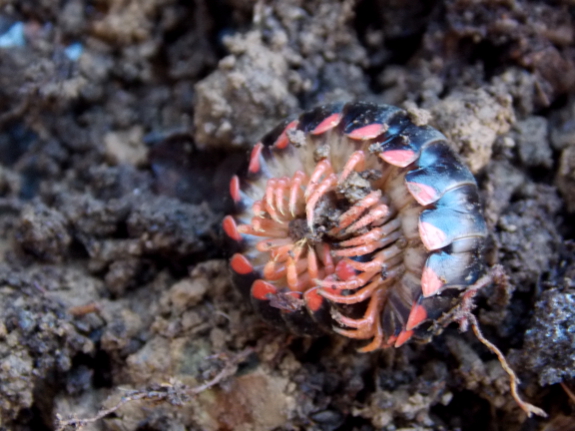
Nearly every morning, Lucy and I walk out to get the mail,
then continue on down the road a short piece to the bridge over the
creek. Depending on my mood, I either consider this walking
therapy or walking meditation --- it does both jobs, plus waking me up
and jump-starting my creativity for the day.
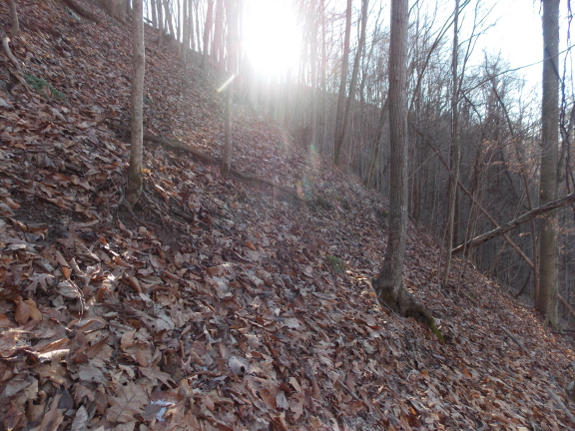
This summer, though, it
was just too muddy to enjoy walking through the floodplain. And I
got grumpy. So when Mark asked to have the month of December to turn the East Wing into a bit more of a habitable space, I started poking at an idea I've had for a long time --- building trails up above the floodplain so I can walk in the dry.
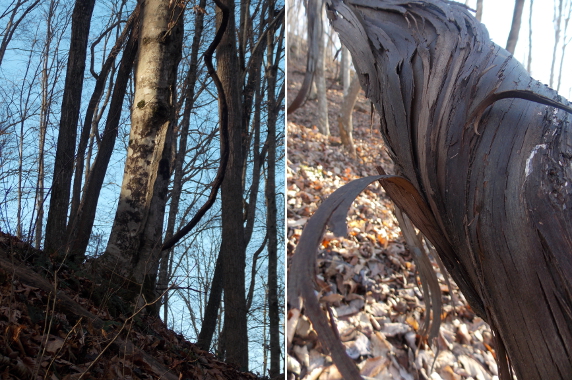
The first couple of weeks, I just wandered.
There's definitely something joyful about walking off the beaten path,
and I wasn't positive I wanted to lose that joy by creating
trails. On the other hand, the non-swamp parts of our property are
very steep, and it's tough to even walk parallel to the slope in these
areas without slipping and pulling part of the hillside down with
you. Even though Mark says I'm part billy goat, I don't usually go
to these areas because it's just too hard to keep my footing.
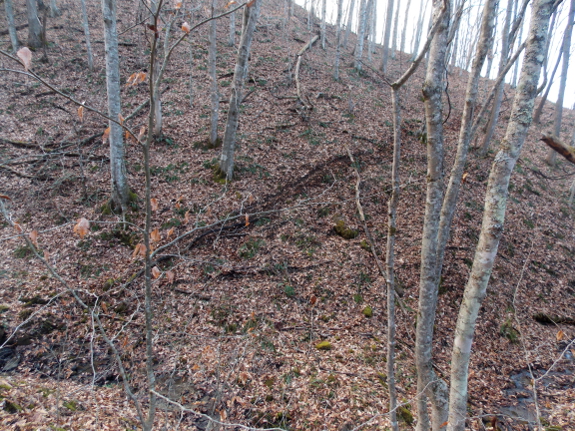
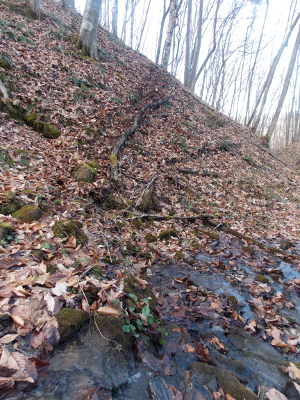 So
I eventually decided to make the least intrusive trails I could that
would still let me keep my footing. I started by following a deer
trail, then cut out a notch on the uphill side of the path, piling the
shovelful of dirt onto the downhill side. I figure that's plenty
of trail for agile people walking single-file, and the trail will surely
get easier to follow each time I tread on it.
So
I eventually decided to make the least intrusive trails I could that
would still let me keep my footing. I started by following a deer
trail, then cut out a notch on the uphill side of the path, piling the
shovelful of dirt onto the downhill side. I figure that's plenty
of trail for agile people walking single-file, and the trail will surely
get easier to follow each time I tread on it.
My goal is to make a
one-mile loop this winter, to replace my one-mile-round-trip driveway
walk when the latter is too wet to be pleasurable. That's not as
tough as it sounds since about a third of a mile of the route runs along
old logging roads. If you're following along at home
runningmap.com is a handy tool that helps you figure out how long each
leg of the trail will be. Maybe I'll have the trail up and running in time to use it to scope out our first wildflowers in March?

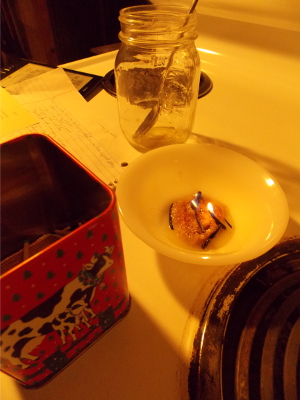 The best thing about Unlearn, Rewild
is that it's bound to inspire you to try something right away. I
finished the book after dark, which left my experimentation options
relatively narrow, but I did have cattails in the greywater wetland
right outside our back door. So I decided to try out Olson's
technique of using cattail fluff in oil to create a lamp. As you
can tell, it didn't work too well --- the matches seemed to be better
wicks than the cattail fluff --- but it was fun to try.
The best thing about Unlearn, Rewild
is that it's bound to inspire you to try something right away. I
finished the book after dark, which left my experimentation options
relatively narrow, but I did have cattails in the greywater wetland
right outside our back door. So I decided to try out Olson's
technique of using cattail fluff in oil to create a lamp. As you
can tell, it didn't work too well --- the matches seemed to be better
wicks than the cattail fluff --- but it was fun to try.
Maybe next I'll talk Mark
into experimenting with some of Olson's toilet-paper alternatives ---
snow, moss, the inner bark of cedar trees, a stick, or grass. Naw,
probably better to trap a squirrel in the interest of marital harmony.
| This post is part of our Unlearn, Rewild lunchtime series.
Read all of the entries: |
 It's been over a year since I
fixed the Skil drill
press return spring.
It's been over a year since I
fixed the Skil drill
press return spring.
No problems to report even
though we doubled the work load this year with the addition of the EZ Miser.
I'd say it's my favorite
power tool, which is why I thought it was worthy of the R2D2 hood
ornament.
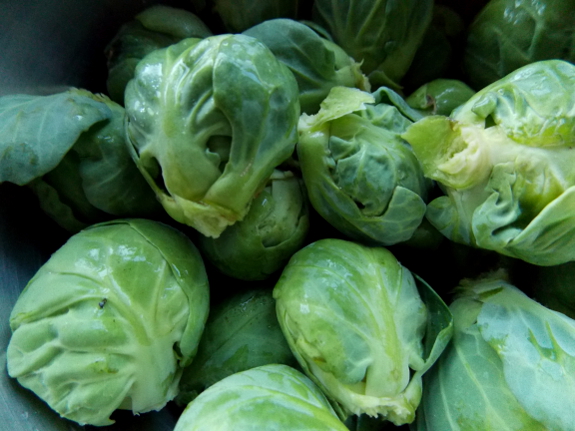
What's on the menu at the bitter end of December on our homestead? Lots!
On Christmas, I broke into the brussels sprouts in the quick hoops
for the first time. They were huge and plump, and 1.5 plants
provided enough sprouts for a hefty side for two. I figure what's
left should last us through the end of January if I serve them twice a
week or so.
The lettuce is just about gone under the quick hoops,
but we've got plenty of leafy greens both inside and outside the quick
hoops to enjoy --- mustard (a bit damaged by cold) and three kinds of
kale.
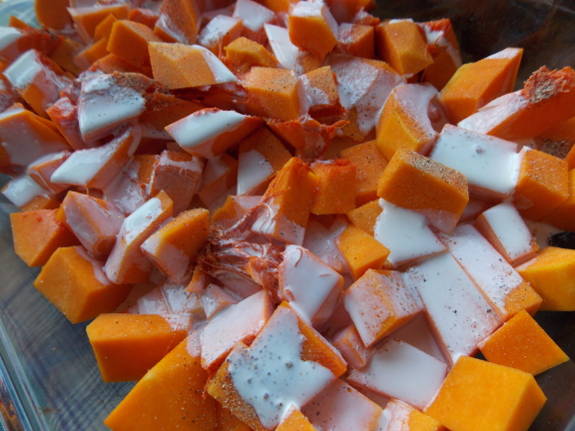
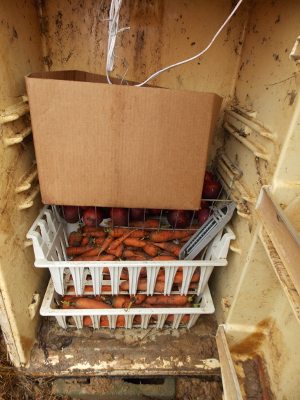 In
the kitchen cupboards, we've still got masses of butternuts, sweet
potatoes, garlic, and onions. The first three are no surprise, but
this is the first year we've managed to grow enough onions that we
didn't run out before the new year. Maybe they'll last all the way
until next year's harvest?
In
the kitchen cupboards, we've still got masses of butternuts, sweet
potatoes, garlic, and onions. The first three are no surprise, but
this is the first year we've managed to grow enough onions that we
didn't run out before the new year. Maybe they'll last all the way
until next year's harvest?
We ate up the last cabbage last week, but still have at least half a bushel of carrots in the fridge root cellar.
Unless I'm forgetting something, that's it for fresh vegetables...but
that's okay because there are also lots of green beans and plenty of
vegetable soup in the freezer, plus various fruits, jams, and sauces,
frozen, canned, and dried. Quite an abundant array of homegrown
foods to last us until the spring 2014 garden gets underway!
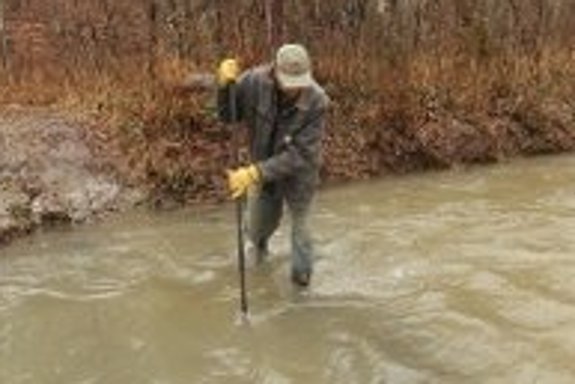
I should have gone back to
get my hip
waders last week...but I didn't.
The water flowed into one of
my Muck boots for the first time. In the past when I've got water proof
boots flooded they just feel a little broken after they get dried out
and usually start leaking within a month of walking.
Drying these Muck
boots was a simple matter of drainage and placing them near a heat
source the rest of the day. They seem to have bounced back better than
a Slinky.
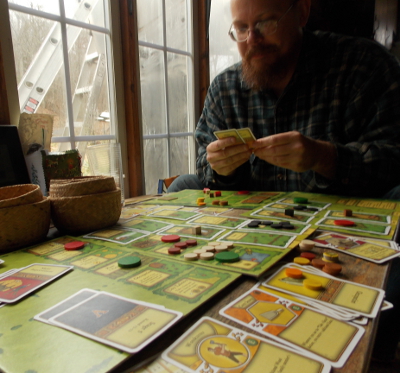 "Anna, I'm curious- are there any staples you buy anymore? I seem to
remember you saying you love avocados and can't grow them yet but do you
purchase other treats or things like grains?"
"Anna, I'm curious- are there any staples you buy anymore? I seem to
remember you saying you love avocados and can't grow them yet but do you
purchase other treats or things like grains?"
Mark and I were at the
grocery store Friday, and I was just thinking that the only thing we
bought were treats --- chocolate, avocados, apples, and
clementines. We're mostly off grains, so we only buy flour every
few months, preferring to get our carbohydrates from homegrown staples
like sweet potatoes and butternuts, along with fruit (a significant
quantity of which is still store-bought at this time of year, but
hopefully will be homegrown within a few more years).
Other staples we purchase
in very limited quantities include: sugar, spices, baking powder,
baking soda, salt, pepper, corn starch, lentils and dried beans.
We buy significantly more dairy products (cheese and yogurt), nuts, and a
considerable amount of meat (75% of which is butchered whole lambs from a friend).
We also buy eggs,
although most of those go to Lucy (and most of the eggs we eat come from
the farm). On that note, despite a few forays into making our own pet food, we're currently still on dried kibble for both the cats and dog.
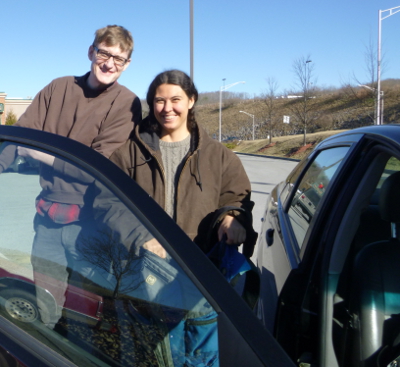 The
good news is that since the bulk of the food we eat is either homegrown
or bought from friends, we could continue eating those staples
indefinitely regardless of the state of our wallets or the world.
The bad news is that we seem to increase the quality of the non-staples
we buy at the same time we cut down on their quantity, so we don't spend
any less at the grocery store. That's the trouble with growing your own food --- you start to realize that high quality is really worth it.
The
good news is that since the bulk of the food we eat is either homegrown
or bought from friends, we could continue eating those staples
indefinitely regardless of the state of our wallets or the world.
The bad news is that we seem to increase the quality of the non-staples
we buy at the same time we cut down on their quantity, so we don't spend
any less at the grocery store. That's the trouble with growing your own food --- you start to realize that high quality is really worth it.
(By the way, the photos
above have nothing to do with this post. My big brother and I
enjoyed a couple of delightful games of Agricola Saturday after he helped me scout the middle third of my new trail.
And Mark and I met up with my cousin-in-law for lunch in the big city
Friday. Today we get to hang out with my mother-in-law, who I
don't see nearly often enough. Quite an action-packed weekend!)
How do I measure the "size"
of an event like one of our creek floodings?
I'd say it's a mixture of how
long it takes the water to drop to a safe hip wader depth and the
duration of the rain fall.
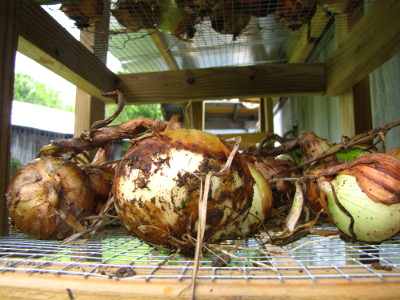 "Hi Anna- another curious inquiry: I know you've mentioned what type of
onions you grow on your homestead, but would you please repeat it again,
and how much did you plant this year to finally have enough to last you
through the winter? Our homestead will be the same size of yours and it
would be helpful to have an idea of the ideal amount to plant without
having to go through eight years of trial and error!"
"Hi Anna- another curious inquiry: I know you've mentioned what type of
onions you grow on your homestead, but would you please repeat it again,
and how much did you plant this year to finally have enough to last you
through the winter? Our homestead will be the same size of yours and it
would be helpful to have an idea of the ideal amount to plant without
having to go through eight years of trial and error!"
This is an excellent
question, especially since it's taken us several years to figure out
each aspect of growing our own onions. The first place to start is
with deciding if you want to 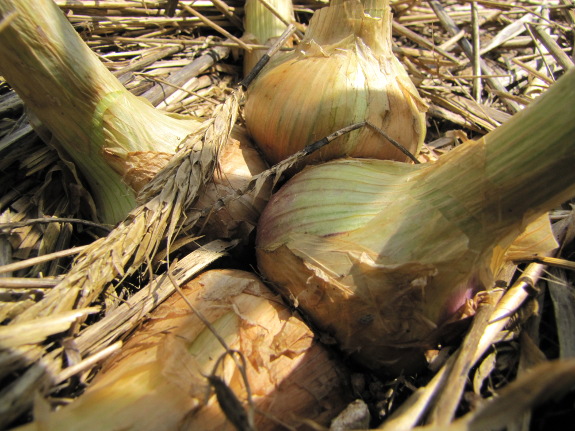 grow
from sets or from seed. Although I don't have first-hand data to
back this up, the books all say that onions from sets won't be good
keepers, so we chose to grow from seed. However, some farmers are
smart and grow both --- using the onions from sets (easy to grow, but
more expensive to start) for eating over the summer, then keeping the
onions grown from seed for winter eating. Part of our success with
still having onions at the end of December is actually do to a variant
of this method --- I used a bunch of our potato onions in summer soups, which left many more of our onions from seed to store for the winter.
grow
from sets or from seed. Although I don't have first-hand data to
back this up, the books all say that onions from sets won't be good
keepers, so we chose to grow from seed. However, some farmers are
smart and grow both --- using the onions from sets (easy to grow, but
more expensive to start) for eating over the summer, then keeping the
onions grown from seed for winter eating. Part of our success with
still having onions at the end of December is actually do to a variant
of this method --- I used a bunch of our potato onions in summer soups, which left many more of our onions from seed to store for the winter.
Which moves me on to one
of the questions you actually asked --- what variety did we settle on
for the onions we grew from seed? We grew Pontiac this year with
great success, but before you go out and buy your seeds, please read this post about the difference between short-day and long-day onions.
The short version is that southerners and northerners need to choose
different varieties of onions --- we live in the middle, but long-day
onions did better for us in my trial.
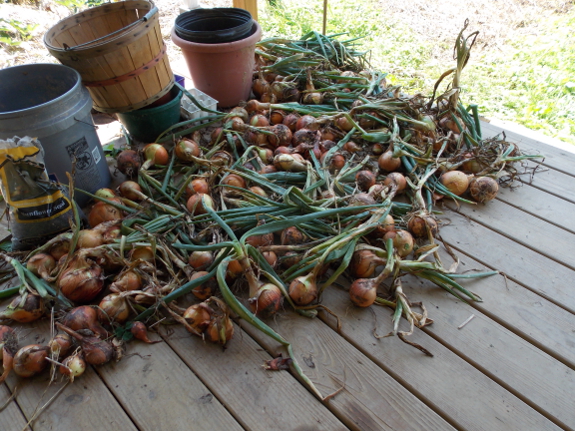
How much did we
grow? We planted seven beds of onions this spring, which equates
to about 126 square feet of onions. As I'll explain shortly, we're
still working the kinks out of starting our seedling onions, so I
probably could have gotten about 50% more onions out of that area if I'd
made sure all of the seedlings survived transplant and spring cold
snaps. And I'm afraid I didn't weigh our onion harvest this year
since I started cutting into them before they were done curing.
Suffice it to say that we're big onion eaters, needing an onion in most
things I cook, then take a look at the photo above to get an idea of the
harvest quantity.
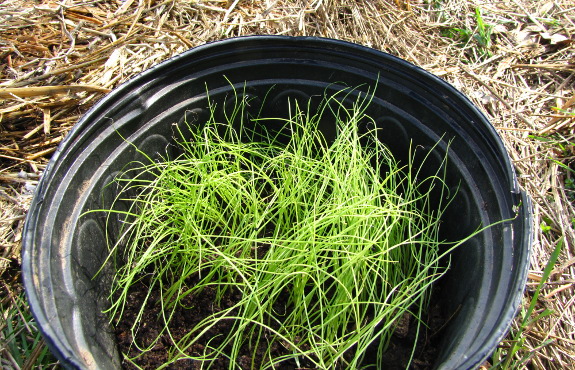 The
final factor I want to point out is the importance of getting your
onion seedlings off to a good start. After various sorts of trial
and error, I've settled on starting the seedlings in pots (one big pot
works well) inside around the beginning to middle of February.
Onion seedlings are very slow growers, so you won't need to do lots of
potting up --- just keep them somewhere they won't freeze solid during
spring cold snaps. I set out the seedlings in early April
directly into the soil (although you can set them out sooner under
quick hoops), then harvested plump bulbs in the middle of August.
The
final factor I want to point out is the importance of getting your
onion seedlings off to a good start. After various sorts of trial
and error, I've settled on starting the seedlings in pots (one big pot
works well) inside around the beginning to middle of February.
Onion seedlings are very slow growers, so you won't need to do lots of
potting up --- just keep them somewhere they won't freeze solid during
spring cold snaps. I set out the seedlings in early April
directly into the soil (although you can set them out sooner under
quick hoops), then harvested plump bulbs in the middle of August.
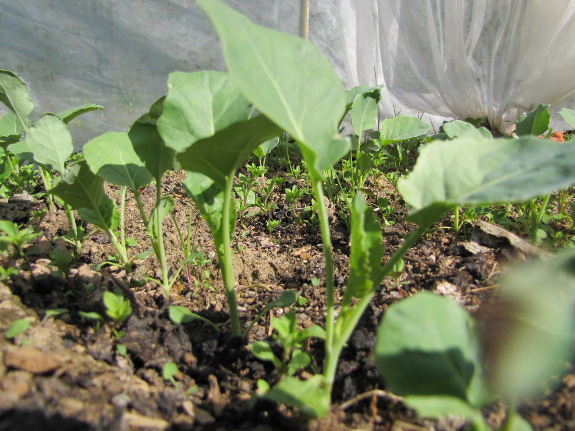 I
had actually planned to plant twice as many onion beds in 2013, but
didn't have enough seedlings for various reasons. I'm used to
pushing the envelope with old seeds, but learned the hard way that onion
seeds are one of the few that germinate very poorly when more than a
year old. Meanwhile, I also discovered that they're very prone to
damping off in homemade potting soil. In 2014, I'll be buying all
new seed, and will try half of our seeds under quick hoops since this method of starting broccoli and cabbage transplants has been a real winner in our spring garden.
I
had actually planned to plant twice as many onion beds in 2013, but
didn't have enough seedlings for various reasons. I'm used to
pushing the envelope with old seeds, but learned the hard way that onion
seeds are one of the few that germinate very poorly when more than a
year old. Meanwhile, I also discovered that they're very prone to
damping off in homemade potting soil. In 2014, I'll be buying all
new seed, and will try half of our seeds under quick hoops since this method of starting broccoli and cabbage transplants has been a real winner in our spring garden.
In other words, I've
still got more to learn! But hopefully this post will save you at
least six or seven years of trial and error. Happy onioning!
Have we ever caught anything
with the live
trap from last year?
Anna has been trying to catch
a squirrel lately, but the last flood washed away the almonds we were
using for bait.
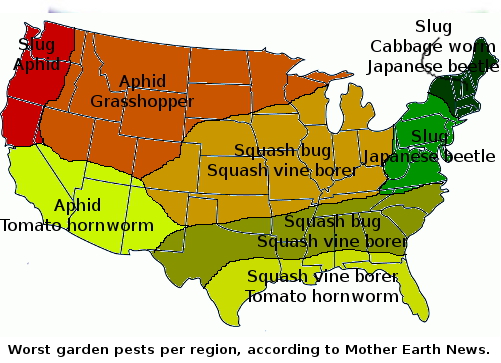

I started working on an ebook about garden ecology...and it turned into a
book about dealing with invertebrate pests in the garden. Rather
than focusing on mainstream, organic solutions like Bt and row covers,
I'm writing about what we do in our own garden --- attracting beneficial
insects and larger predators, hand-picking, and so forth.
And as I wrote, I
realized that some of our readers may have excellent permaculture
techniques of their own to keep slugs and bugs from demolishing their
fruits and vegetables. If you're interested in being featured in Bug Theory for Gardeners, please leave a comment below or email anna@kitenet.net
with your problem and solution. I'm less interested in
commonly-used techniques like beer traps for slugs, and more interested
in options like variety selection, ducks in the garden, and other
low-work and chemical-free ways of keeping the pests at bay.
To sweeten the pot, I'll include your URL in the ebook when I give you credit (if you want), and will mail you a copy of either The Weekend Homesteader, Watermelon Summer, or our 2014 calendar
(your choice) if I use your tip. I'm most likely to use a tip if
it comes with a photo attached, but feel free to submit picture-less
first-hand experiences as well.
I'm looking forward to hearing what you've come up with!
Last week's flood was the
first major test of the new swamp
bridge anchoring.
Even though water was above
the bridge it doesn't seem to have budged.
Want more in-depth information? Browse through our books.
Or explore more posts by date or by subject.
About us: Anna Hess and Mark Hamilton spent over a decade living self-sufficiently in the mountains of Virginia before moving north to start over from scratch in the foothills of Ohio. They've experimented with permaculture, no-till gardening, trailersteading, home-based microbusinesses and much more, writing about their adventures in both blogs and books.
